South Korea swanks a rich melting pot of traditions, customs and heritage, manifesting itself as significant country in many aspects. The renowned country is officially known as the ‘Republic of Korea’, and its rich tapestry of history and heritage reveals the cultural opulence engirdling the all-inclusive facets from art and architecture to the ancient monuments, gastronomy and innovative technological advancement. Visitors can plunge into the flamboyant history and discover the heritage sites, authentic food and traditional festivals along with stunning beaches and luxe hotels. The rich culture and lip-smacking cuisine, offered here, evince the legacy which is being carried forward by generations. Out of all the tourist Attractions in South Korea, the blog enlists a few of them that can definitely enchant the itinerants.
Undulating Cultural Attraction of South Korea
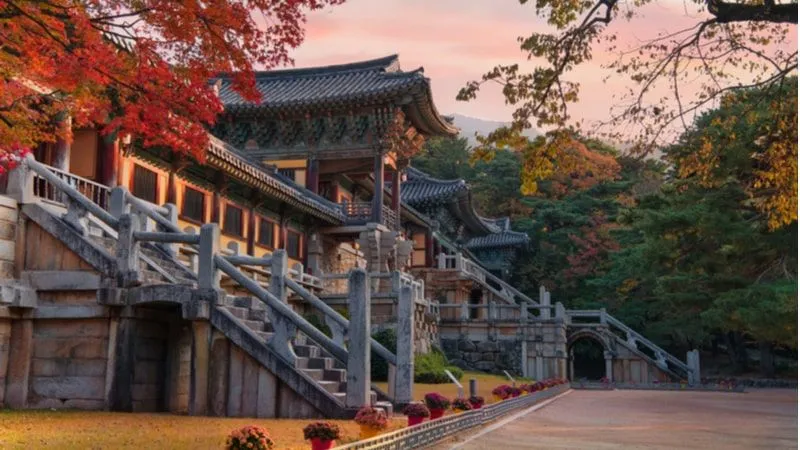
Korea is one of the bewitching countries in Asia, given its rich history that led to an immense swell in traditions and culture. The country has beautifully kept its cultural rituals alive by religiously practicing them and make a list of tourist attractions in South Korea. Explore the juxtaposing traditions and evolution within one boundary in the most enthralling ways by visiting the ensnaring historical places to visit in South Korea. Despite being a country that walks hand in hand with modernization, South Korea has retained its customs and heritage assiduously. Hop in the country to develop, or accentuate the proclivity, toward the overwhelming diversity that reflects the unique heritage.
1. Changdeokgung Palace
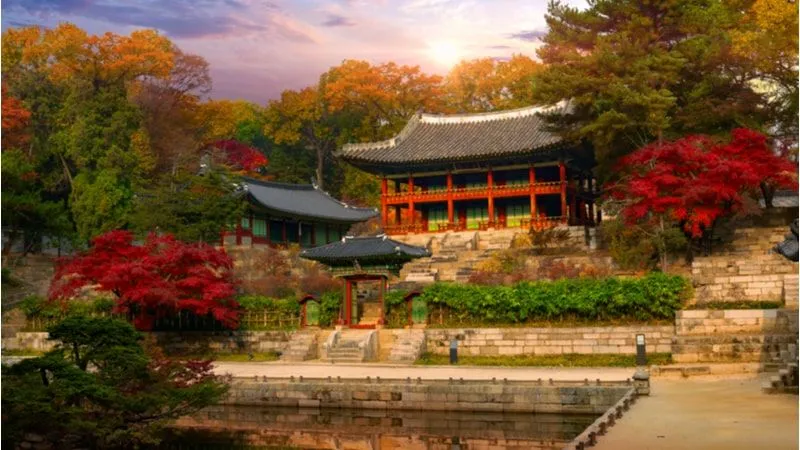
The Changdeokgung Palace Complex in Waryong-dong, Jongno-gu is an ultimate escape that astonishes people from far off lands. Despite being one of the grand palaces of the Joseon periods it has retained its original structure. Changdeokgung Palace Complex was a royal residence until the palaces was consumed to flames when Japanese had invaded Korea in the later 15th century. Later the palace had been fully restored and has retained the glory which is witnessed and adored by people. A secret garden is located in the palace named Huwon, loved for its serenity and tranquility. The garden incorporates ponds laden with lotuses, stone pavilions, mesmerizing fountains and luscious blooming flowers. The garden represents the hypnotizing foliage when the blooming and, is at its peak.
Located: No. 99 Yulgok Road, Jongno District, Seoul, South Korea
How to reach: Visitors can reach Changdoekgung by subway line 1,3,5, and getting off to Jongroga Station and taking exit 6. or by taking line 3 and getting off to Ahngook Station third exit. There are various green and blue busses that reach Changdeokgung Palace bus stop.
Hotels: Hostel Tommy, Tong Tong Petit Hotel, Bukchonmaru Hanok Guesthouse, Beewon Guesthouse, Hostel Haru
Restaurants: Kwonnongdong, Burgerbang, Yongsusan, Mishmash, Bukchon Samgyetang
Suggested Read: Honeymoon in Manali: A Romantic Affair Amidst the Snowy Mountains
2. Bulguksa Temple
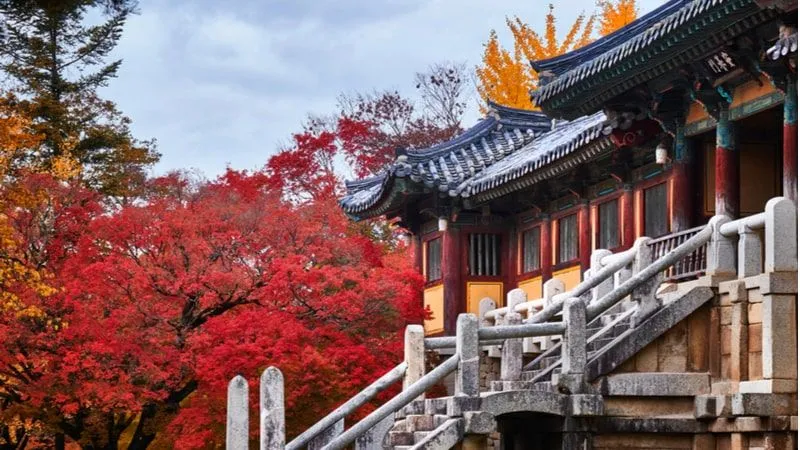
Bulguksa is located on the slopes of Mount Toham. It is one of the most popular heritage sites, Bulguksa Temple was qualified for UNESCO's prestigious list in 1995. The head temple of the Jogye Order of Korean Buddhism consists of many national treasures such as Sakyamuni Pagoda Dabotap and Seokgatap stone pagodas. The establishment of the temple took place when the Silla kingdom was in its prime. Yet another part of the kingdom astonishes the visitors, which has a scenic granite cave temple and is known as the Seokguram Grotto. The most enticing thing about the temple is the big statue of Buddha surrounding the statues of his disciples. Another attraction of the temple is the iris ponds located right outside the temple and the forest areas with lush greenery.
Located: Jinheon-dong, Gyeongju city, North Gyeongsang province, South Korea
How to reach: From Gyeongju bus station you can take bus number 10 or 11. The total distance takes It will take approximately 40 minutes to reach Bulguksa temple and should cost 1700 won.
Hotels: Gyeongju Roamers Stay, Bulguksa Business Hotel, MTM Hotel, Hill Motel, Arisu Gyeongju Hotel
Restaurants: Chodang 400 Years Sundubu, Angel in Us, Hwangnam Bread, Hamyang House, Sukyoung Sikdang, Gyeongju Wonjo Tteoggalbi
Suggested Read: Dukhan West Coast, Qatar: Explore The Finest Locations Of The Region
3. Hwaseong Fortress
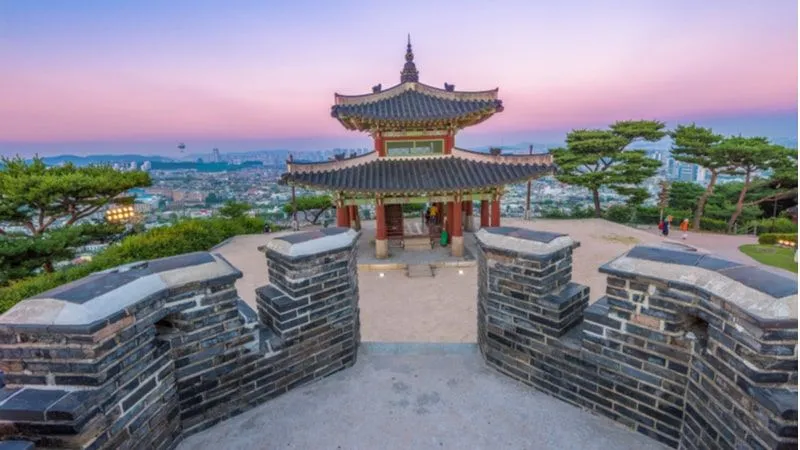
One of the most prestigious stone and brick fortifications, Hwaseong Fortress is an epitome of military architecture in Asia. It is included among the UNESCO World Heritage for its impressive defensive features with very intellectual design and appropriately designated places for the attacking and defending. The fort was built in 1796 and was completed after the period of 2 years by King Jeongjo of the Joseon the fort is located towards the central Suwon, situated approximately 30 kilometers south of Seoul. The fortress guards the palace of King Jeongjo's palace Haenggung. If you are visiting South Korea you have to visit the Hwaseong Fortress, which literally means ‘brilliant caste’ in English and is under the category of must visited tourist Attractions in South Korea.
Located: Provincial capital of Gyeonggi-do, in South Korea
How to reach: Located about an hour out of Seoul in Suwon. Visitors can take the Seoul subway system and can easily reach the destination by taking bus or by personal conveyance.
Hotels: Bang Bang Guesthouse, Suwon Dono1796 Hotel, Malu Hotel, Hotel Arte
Restaurants: Yeonpo Galbi, Boyoung Mandoo North Gate Main, Duriya Sutbul Dak Barbecue, Kabojung Kalbi, Suwon Mandu, Kabojung Kalbi
Suggested Read: Entertainment in South Korea: Stroll Along the Lanes For An Enigmatic Vacation
4. Jongmyo Shrine
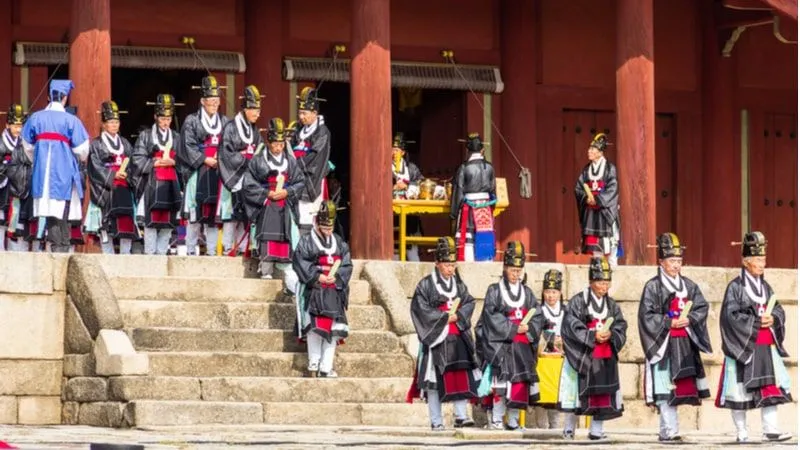
For many, a visit to Changdeokgung means a tour of royal palaces and the optimistic energies of Seoul. People love to visit the sacred Jongmyo shrine. Yet another UNESCO world heritage site tour, which was used to perform ancestral rites of the deceased kings and queens. If you are looking for a historic place that offers tranquility amidst the cacophony of the bustling metropolis then you must head to Jongmyo Shrine in Hunjeong-dong, which is among the most visited tourist attraction in South Korea. The shrine exhibits the ancient culture of Korea and the traditional architecture highlighting the curves and raised platforms that prevailed in the 16th century.
Located: 157, JONGNOGU, Seoul
How to reach: You can reach the Nearest subway at Jongno-gu. Jongno 3- ga to reach the shrine conveniently.
Hotels: Tong Tong Petit Hotel, Hostel Tommy, Orakai Daehakro Hotel, Beewon Guesthouse, Grid Inn Hotel
Restaurants: Cafe Tong, Salon Sulla, Cafe MaRoo, Halmeoni Kalguksu,Jalppajin Ikseon, Suksung Uimi Ikseon,Changdeokgung, Sea Belt Fish Jorim
Suggested Read: Best Places to Visit Manali: Discover the Enchanting Beauty of Serene Wonderland
5. Bukchon Hanok Village
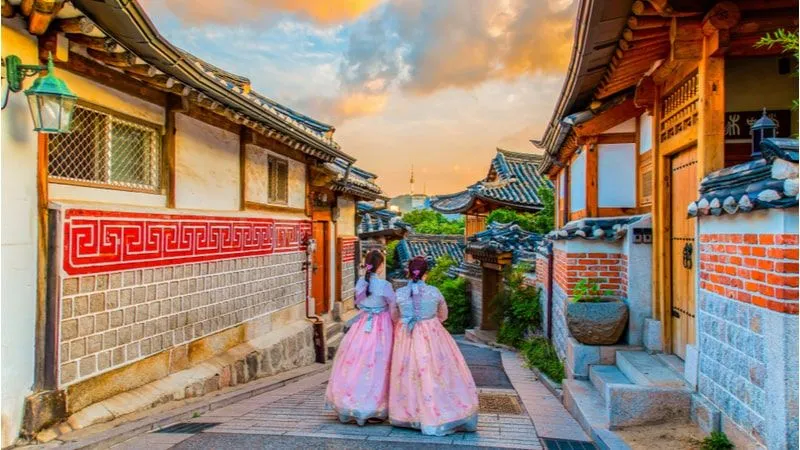
Bukchon Hanok Village in South Korea has plenty of cultural centers and museums that exhibit the ancient tradition of Korea and its Joseon dynasty. If you are someone who adores architecture and love to discover a space by its architecture then the place would welcome you with utmost generosity. Being one of the top attractions in Seoul, it is an amalgamation of modernization and cultural aspects.
Located: Located in Seoul, South Korea. The village is sitated at the top on a hill which is by Jongmyo Royal Palace, Gyeongbok Palace, and Changdeok Palace.
How to reach: The convenient way to reach Bukchon Hanok Village is the Seoul subway. If you are not aware of the routs and ways you can install the Seoul Metro Map or Seoul Metro App. The app is really helpful for those who are new to the area, you can search for the station that connects to Subway Line 3. From Subway Line 3, you can any train leading to the Anguk Station and then looking for Exit 2.
Hotels: Bonum 1957 Hanok and Boutique, Gongsimga Hanok Guesthouse, Bukchonmaru Hanok Guesthouse, Sohyundang Guesthouse, Sophia Hanok Guesthouse, Bukchon Sarangbang - Hanok House
Restaurants: Tea Scent Deutneun House, Halal Kitchen, Soowarae, Fabbro Daejangjangi Hwadeok Pizza, Chamasineun Ddeul, Bokjeong Sikdang, LeeGaShinGa
Suggested Read: Best Honeymoon Places In The World For A Soul-Satisfying Honeymoon Experience
6. Seoul Tower
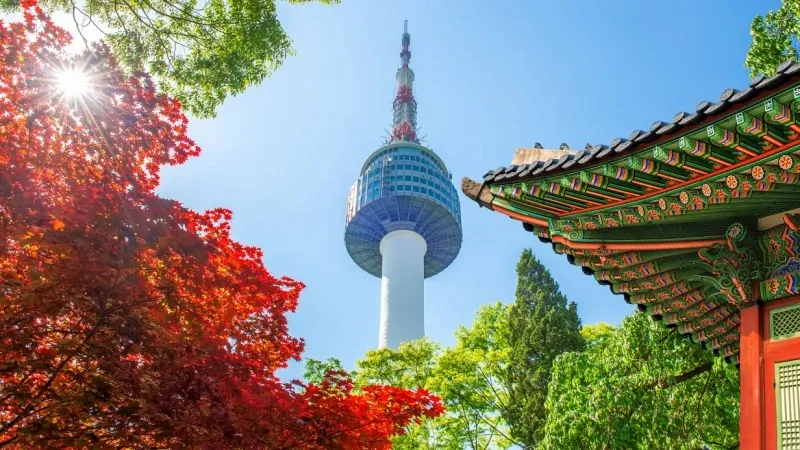
Perched atop Namsan Mountain in the heart of Seoul city, Seoul Tower, also known as the N Seoul Tower, is considered as an iconic symbol of Seoul that offers panoramic city views and vibrant natural surroundings. Constructed in the year 1969 as a broadcasting tower, this towering structure has developed over time and transformed into a popular tourist attraction in Seoul city. Visitors will be astounded with the modern facilities and amenities provided in this significant landmark ranging from up-scale eateries, coffee shops, gift stores, and cultural displays that highlight Seoul's and South Korea's incredible history and legacy. Never forget to visit Seoul Tower at night which turns into a dazzling beacon illuminated by thousands of LED lights, making it one of the best tourist attractions in South Korea.
Location: 105 Namsangongwon-gil, Yongsan-gu, Seoul, South Korea
How to reach: Book a flight to Incheon International Airport in Seoul, that connects the city to other parts of the world. You can hire a cab to go on a city tour.
Hotels: Pacific Hotel, L7 Hotel Myeongdong, Hotel Skypark Myeongdong 3, Banyan Tree Club & Spa Seoul, Hotel PJ Myeongdong, Ibis Styles Ambassador Seoul Myeongdong
Restaurants: N Burger, Owl’s Cutlet, The Place Dining, HanCook N Seoul Tower, N Grill, A Twosome Place N Tower, Chibo Chima, Hemlagat
Suggested Read: Iconic Places To Visit In Spain For A prodigious Vacation!
7. Jeju Island
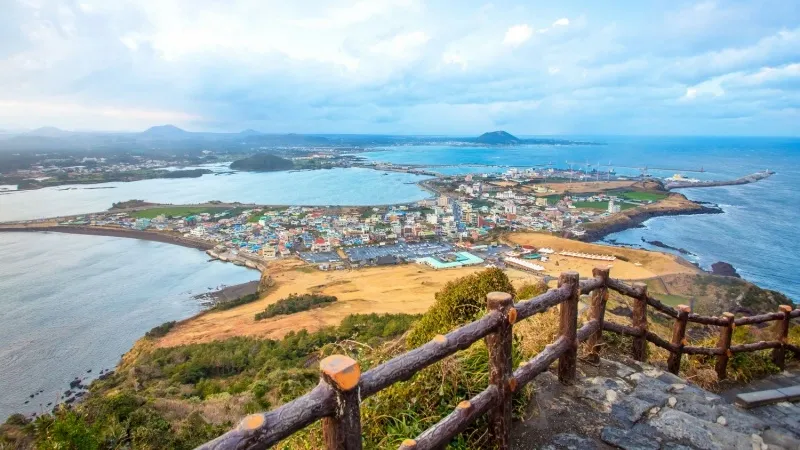
Jeju Island, often called the "Island of Gods," is a magnificent volcanic island off the coast of South Korea that is best known for its varied landscapes, striking natural beauty, and distinctive cultural legacy. The island's sceneries are enhanced by its volcanic origins, which have produced strange lava tubes and caverns scattered around the island, as well as famous sites like Hallasan, South Korea's tallest peak and a UNESCO World Heritage Site. Discover more about its intriguing way of life and visit traditional villages that highlight Jeju's unique architecture, which includes the well-known "hanok" thatched-roof homes. Ranging from trekking through gorgeous trails and discovering lava caverns to relaxing on picturesque beaches and savoring delectable regional food, there are a lot of things to do in South Korea.
Location: Jeju Province, South Korea
How to reach: Book a flight to Jeju International Airport, that connects the city to other parts of the world.
Hotels: Grand Hyatt Jeju, Shilla Jeju, Lotte Hotel Jeju, Grand Josun Jeju, Jeju Shinhwa World Marriott Resort, Haevichi Hotel & Resort Jeju, Amber Pure Hill Hotels & Resorts
Restaurants: Jamae Giksu, Myeongjin Jeonbok, Heugdonga, Hyeopjae Haenyeoui Jip, Hanseong Omegi Tteok, Sanbang Restaurant, Chunsimine, Aewol the Sunset, Nammum Restaurant
Suggested Read: Villas In Malaysia: Unwind Yourself With Luxury At A Scenic Retreat
8. Dadohaehaesang National Park
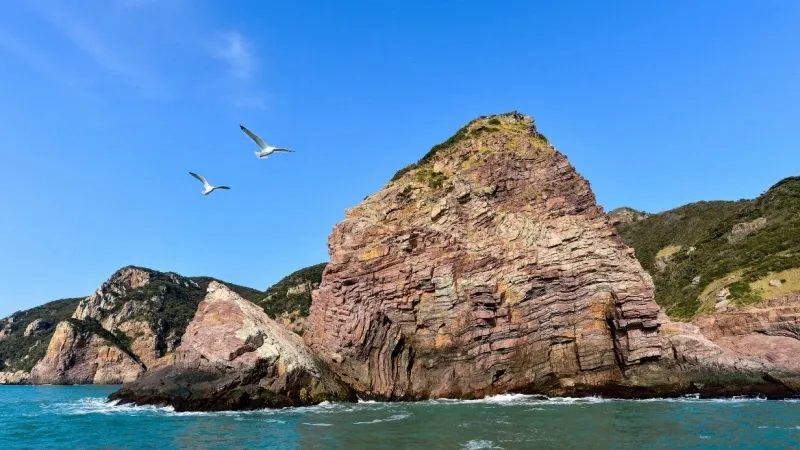
Dadohaehaesang National Park is a marine national park perched on the southwest coast of South Korea that is well-known for its breathtaking coastline beauty, varied marine habitats, and rich cultural legacy. It is the home to an abundance of aquatic life, including different fish species, seabirds, and marine mammals. Activities such as boating, kayaking, snorkeling, and scuba diving allow visitors to Dadohaehaesang National Park to explore its serene waters and provide an opportunity to see beautiful coral reefs, colorful fish, and other intriguing marine species. Moreover, Dadohaehaesang National Park is one of the top tourist attractions in South Korea with an array of historical and cultural landmarks, including old fishing towns, coastal settlements, and ancient temples which will let you embark on a cultural odyssey.
Location: 446-1 Geumo-ro, Nam-myeon, Yeosu-si, Jeollanam-do, South Korea
How to reach: Book a flight to Incheon International Airport in Seoul, that connects the city to other parts of the world. You can book a cab to reach Dadohaehaesang National Park.
Hotels: Gangjin K-Stay Tourist Hotel, SM Resortel, Hotel Hyundai by Lahan Mokpo, Hotel the Ocean, Brown Dot Hotel
Restaurants: N/A
Suggested Read: Tropical Islands in Egypt: Sprinkled Picturesque Atolls
9. Gyeongju
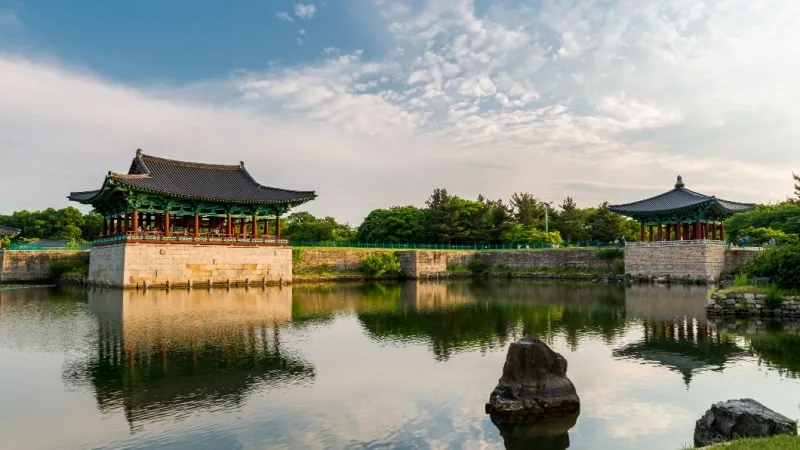
Gyeongju, often known as the "Museum Without Walls," is a city in southeast part South Korea, renowned for its breathtaking natural beauty, old historical landmarks, and rich cultural heritage. Gyeongju's ideal blend of historical and archeological sites, many of which have been named UNESCO World Heritage Sites, is one of its most phenomenal aspects. Moreover, Gyeongju is a vibrant contemporary city with lively festivals, busy marketplaces, and a thriving arts and culture scene. Apart from trying out delectable regional delicacies and taking part in cultural events like folk performances and traditional tea ceremonies, visitors may explore traditional hanok villages. Never forget to visit the Gyeongju National Park, one of the best places to visit in South Korea and explore its scenic hiking trails.
Location: Southeastern corner of North Gyeongsang Province, South Korea
How to reach: Book a flight to Pohang-Gyeongju Airport, that connects the city to other parts of the world.
Hotels: Lahan Select Gyeongju, Tourist Hotel GG, Hilton Gyeongju, Commodore Hotel Gyeongju, Benikea Swiss Rosen Hotel Gyeongju, Sono Belle – Gyeongju, Ramada Hotel & Resort Gyeongju
Restaurants: Palujeong Haejang-guk, Byeolchaeban Gyodong Sssambap, Metdol Sundubu, Hwangnam Milmyeon, Gamnodang
Suggested Read: Shopping In Lebanon: A Detailed Guide To The Best Souvenirs & Souqs In The Country
10. Lotte World
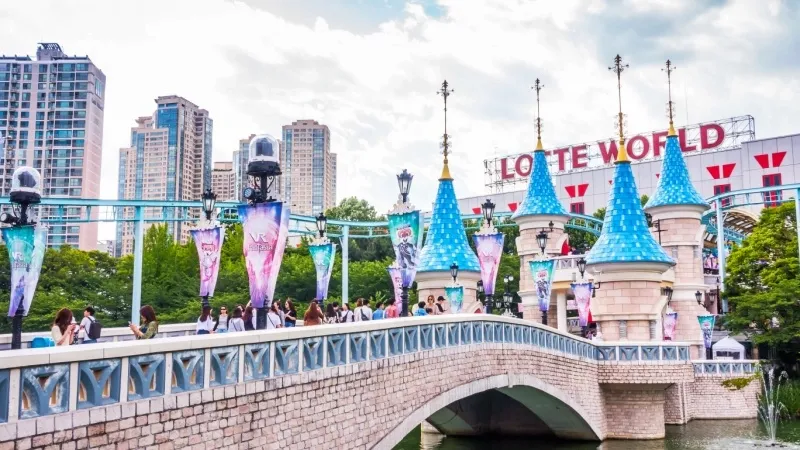
One of the biggest indoor theme parks in the world, Lotte World is a huge entertainment complex situated in Seoul, South Korea. With exhilarating rides, enthralling performances, eating, shopping, and more, Lotte World provides an immersive experience for guests of all ages. It caters to the needs of every visitor ranging from soothing carousel rides and interactive activities to fast roller coasters and water rides. Enjoy exhilarating rides like the Gyro Drop and Gyro Swing while taking in breath-blowing vistas of Seoul's skyline. A variety of entertainment options are available at Lotte World, one of the best tourist attractions in South Korea as well, including parades, live performances like Lotty’s adventure Parade, Character Fantasia, Mystic Mask Fairy Land, and character meet-and-greets from Korean and foreign animation.
Location: 240 Olympic-ro, Songpa-gu, Seoul, South Korea
How to reach: Book a flight to Incheon International Airport in Seoul, that connects the city to other parts of the world. You can hire a cab to go to Lotte World.
Hotels: Lotte Hotel World, Delight Hotel, GLAD Gangnam COEX Center, Signiel Seoul, Sofitel Ambassador Seoul Hotel Shilla Stay Samsung
Restaurants: Crystal Palace, Popcorn Factory, Arabian Bazzar, Snack Jan Jose, Cafe Ariana, Treeble’s Snack
Suggested Read: Places To Visit In India In Summer: A Detailed Guide To A Perfect Holiday
Pulsating Cultural Festivals in South Korea
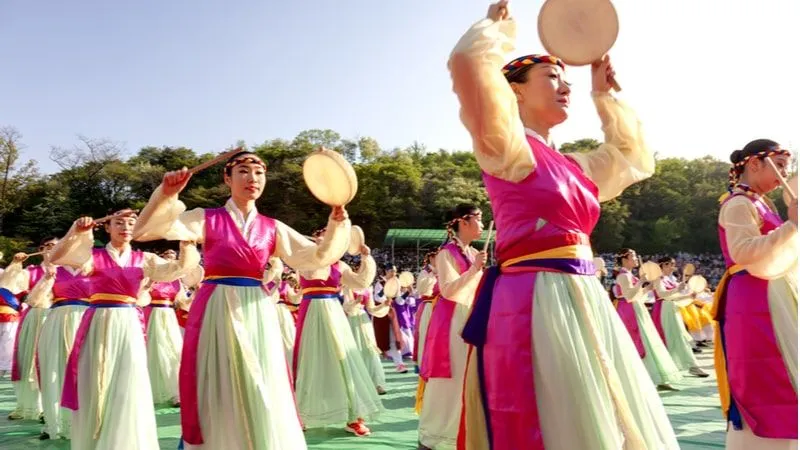
There is an endless list of things to do in South Korea, but the well preserved, age-old culture is one of the highlights in the modern era. Its bodacious festivals are must-visit attractions in South Korea to be attended, at least once in a lifetime. Not only do visitors enjoy every moment of theirs during the festivals, but also get to comprehend the rich culture and folk tales. Once you have visited this phenomenal country you will always crave more.
1. Jeju Fire Festival
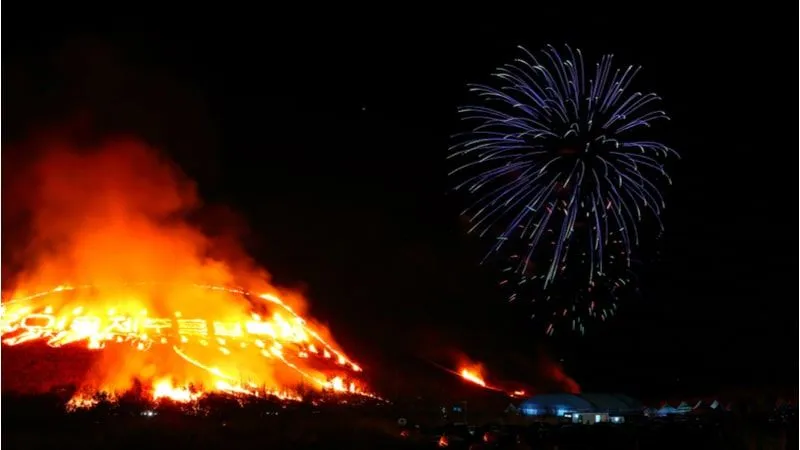
The Jeju fire festival s one of the most famous winter festivals in South Korea and is globally renowned as it is an event certified by the Ministry of Culture, Sports, and Tourism. In this festival, the locals ignite the fire in the fields as per the tradition. The purpose is to burn off the old and wilted grass for cattle and to kill vermin that might have developed in the soil for making it fertile for the next crop. The main programs that are part of the festivals are, contests/competitions, a folk market, and agricultural customs. The festival also includes folk dance, torch march and tribal games.
Where: Jeju Island
When: Between Feb and March
Why: To burn off the old and wilted grass for cattle and to kill vermin that might have developed in the soil for making it fertile for the next crop
Suggested Read: Nightlife In India: Get Overwhelmed With Newfound Side Of The Country
2. Seongsan Sunrise Festival
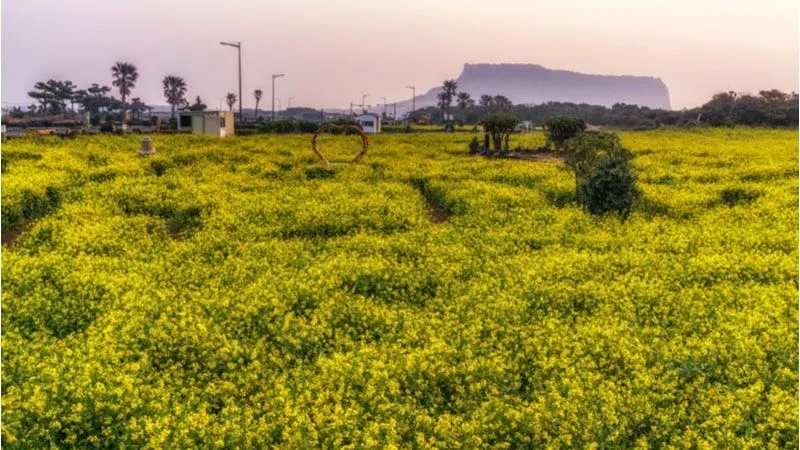
The festival started in 1994 and is held on Seongsan Ilchulbong of Jeju Island, locally known as the sunrise peak. During this festival, locals gather and hike up to the sunrise peaks to witness the first rays of the sun and wish for a prospering year ahead. Various programs are organized for tourists and locals on December 31, January 1, and 2. Seongsan Ilchulbong Peak is amongst the most beautiful viewpoints of Kore and is enlisted by UNESCO under World Nature Heritage Site. While you are here you can check out the nearby attractions as Jeju island homes stunning sand beaches of South Korea, that are adored by visitors attendignt the cultural festival.
Where: Seongsan Ilchulbong, Sunrise Peak- Jeju
When: 31st Dec – 2nd January
Why: To witness the first rays of the sun and wish for a prospering year ahead with positive energies.
3. Seollal
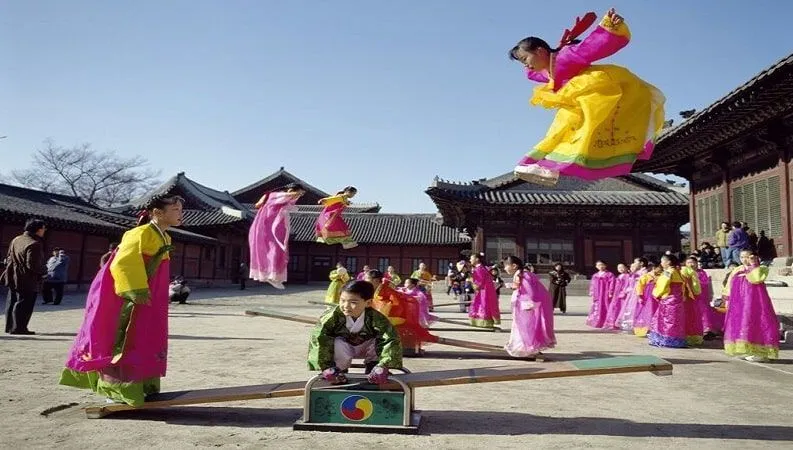
Seollal, the Korean Lunar New year, is celebrated on the first day of the Korean calendar. The events are enjoyed by the entire country, with all pomp and show. The celebration begins on the day before the new year and it lasts for the next three days. Locals wear traditional dresses, cook and eat traditionally authentic dishes and involve in fold dance. Tradition al games and folk tales are also an integral part of the event. People meet and greet each other and Exhange gifts. If you are planning a vacation and looking for places to visit in February then you can definitely visit here and attend this lively event.
Where: South Korea
When: February
Why: To celebrate New year
Suggested Read: Places To Visit In Singapore For The Restless Mind And Wandering Soul
4. Hansik
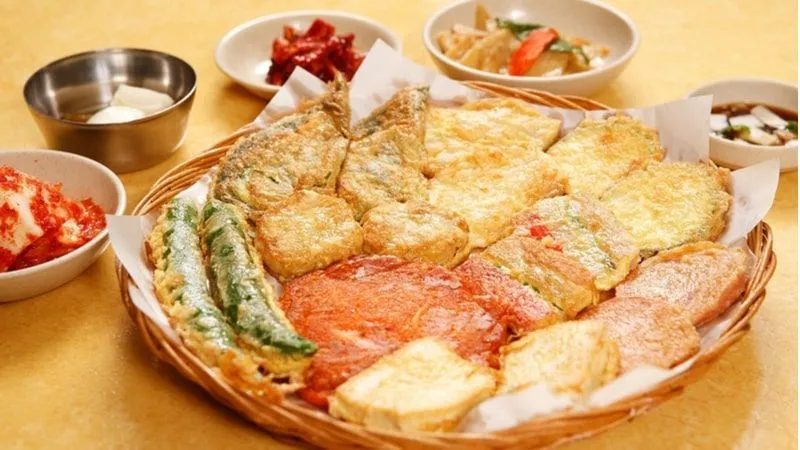
Hansik is a popular festival in which people indulge in cooking without using fire and consume cold food on the day. According to Korean mythology, the country performs sacrificial rites at Jongmyo. Locals visit their ancestral graves, plant trees and offer prayer at the grave. The occasion of the Hansik festival also marks the beginning of farming as farmers begin spreading seeds in the field for good fortune and prosperity.
Where: South Korea
When: The dates may vary
Why: According to Korean mythology, locals visit their ancestral graves, plant trees and offer prayer at the grave
Suggested Read: Top Hotels In Pattaya For A Stay In Lavish Comfort
5. Dano
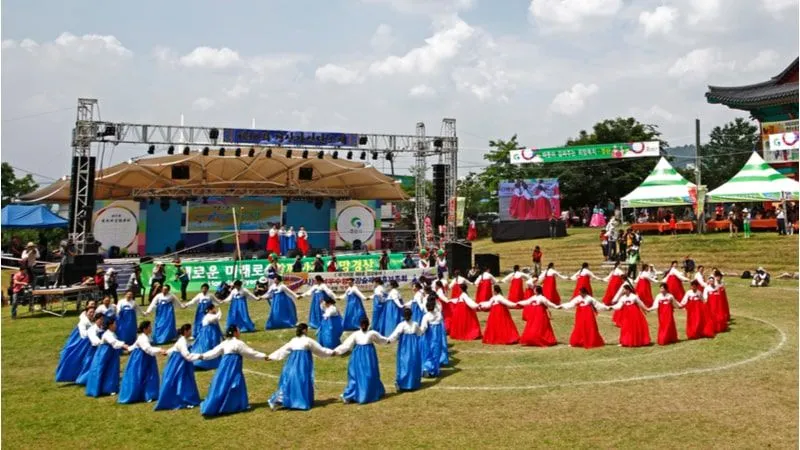
Yet another popular festival of Korea, Dano is an event that evokes happiness and rejoice in people. Celebrated in the fifth month of the lunar Korean calendar, the grand festival is also a national holiday. Locals dress up attires of red and blue color, and women wash their hair with Changpo water and use the roots of Changpo to make hairpins that prevent headaches. People from around the world try and attend the festivals and enjoy traditional folk games. Local food like ssuk tteok, and herb rice cakes are yet another charm to the fest.
- Where: South Korea
- When: June-July
- Why: Dano is a traditional festival in Korea and it is celebrated on the fifth day of the fifth month according to the Korean lunar calendar.
Authentic Food in South Korea That You Must Try
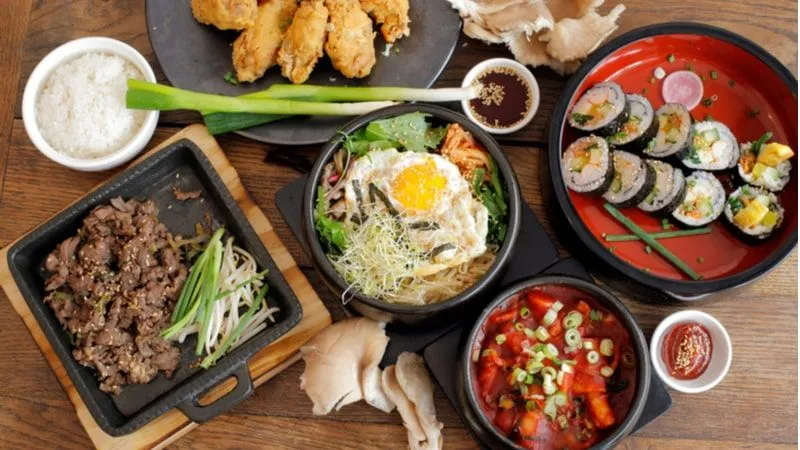
Diving into traditional food is an excellent way of exploring a countries culture. It is a fact undeterred that Korean food has been influenced by many external factors over the years. This influence is manifested in Korean gastronomy by attenuated elements from Japan, Mongolia and China that have added to the flavor of original cuisine. During a vacation in Korea, excursionists come across plenty of authentic dished counting from barbeque, stews, sides and desserts are enriched in the flavors to satiate your palate.
1. Haejangguk
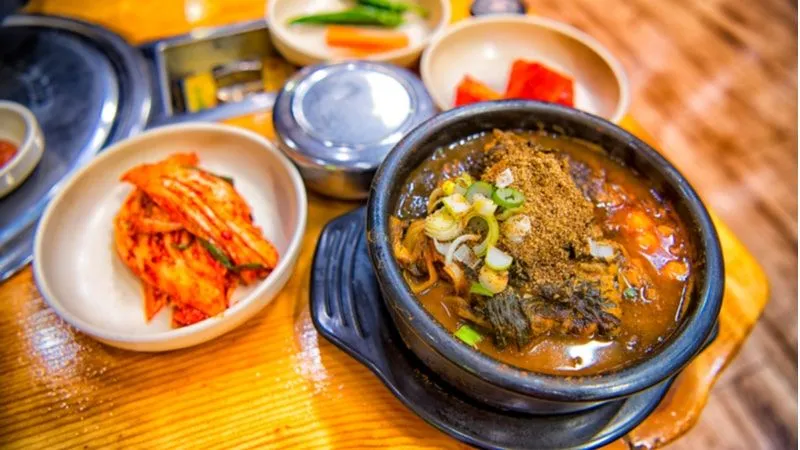
Pronunciation: ah-jang-gook
Also known as Hangover stew it is a delightful soup made from beef broth consisting of dry Napa cabbage and other vegetables. In traditional culinary escape, there are three main types of haejangguk out of which one is prepared with sliced squids, another includes ox bone broth and third is prepared with raw eggs. On your trip to Seoul, if you wish to try haejangguk, you must visit the Cheongjin-dong which is famous for its cooking style and exquisite dish. The soup has been famous and one of the most loved recipes from Goryeo Dynasty.
Suggested Read: Popular Places To Visit In Asia For A Great Leisure Trip
2. Kimchi
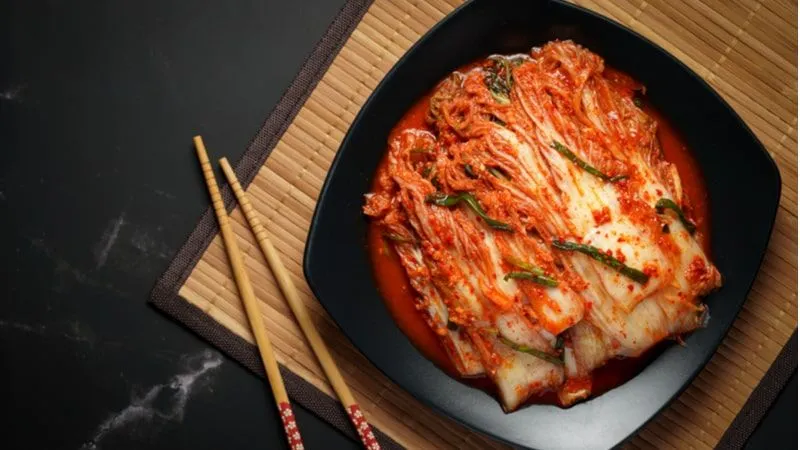
Pronunciation: kim-chee
Kimchi is a traditional side dish of salted and fermented vegetables and is one of the most recognizable traditional Korean dishes around the world. The most important ingredient in Kimchee is the Naba cabbage and other vegetables are fermented to make the recipe. There are various styles based on dominating flavours during fermentation. A few of the variants in flavour include Fiery hot, pepper, ginger and garlic. Kimchi is an integral part of Korean culture from 37 BC to 7 AD and is recognized by UNESCO as an Intangible Cultural Heritage of Humanity Item.
Suggested Read: Beaches in Australia: Top 10 Spots to Enjoy that Seaside Vacation
3. Samgyetang
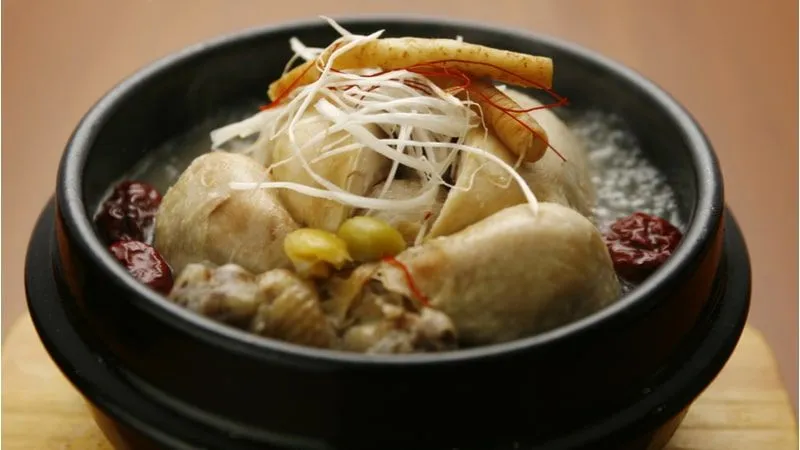
Pronunciation: sam-guy-tang
In South Korea, Samgyetang is a staple that is very common in the hot summer season. The chicken, and ginseng soup is flavored with various dominant flavors such as young chicken filled with garlic, rice, jujube, and ginseng, and is believed to enhance stamina improve health. This soup is primarily eaten on Chobok, Jungbok and Malbok, three particular days of the lunar calendar.
Suggested Read: New Year Celebration in Goa 2024: Time to Celebrate Under Lightning Sky
4. Hobakjuk
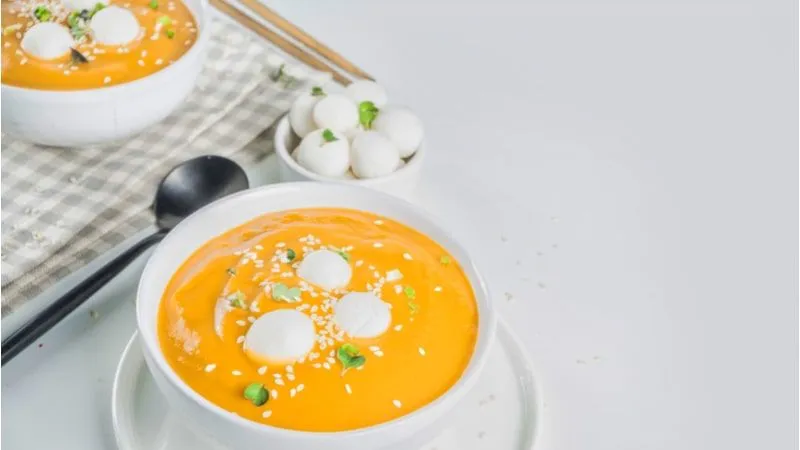
Pronunciation: oh-back-juke
It is a sweet porridge made with common ingredients such as pumpkin and rice cake balls. To prepare the rice balls glutinous rice is used, the richness of the dish is the reason why it is being used as much-required nourishment for the people recovering from sickness. Hobakjuk is a popular Korean breakfast and can be served hot or cold depending upon the preference of the person devouring it. One amazing fact is Korean find it rude to put a bowl in their mouth thus to eat such dishes, it is required to use spoons and other needed cutlery. The preparation of hobakjuk is simple and red or black beans are/can be added to make the broth richer and savory.
Suggested Read: Honeymoon Destinations In Asia: The Ultimate Guide
5. Bulgogi
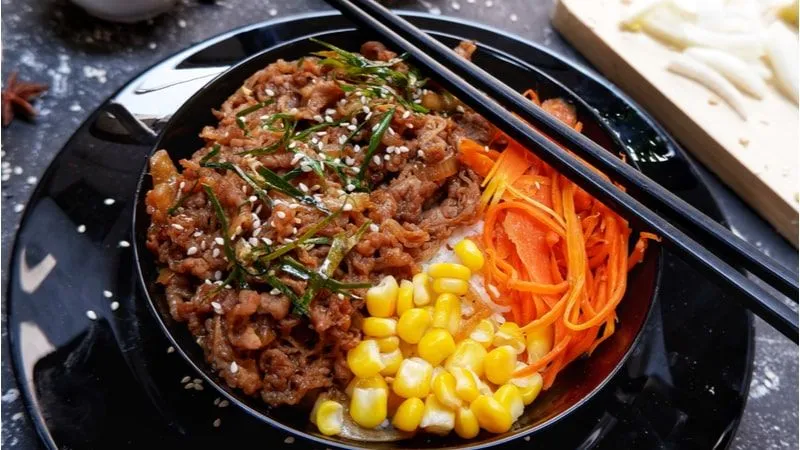
Pronunciation: bool-go-ghee
This savory dish is made, with thin slices of meat marinated to a sweet, hot and Smokey flavor. Bulgogi is traditionally a grilled dish but, over the years, many improvisations have been made. The improvisations have led to roasting, boiling and stir-frying of the ingredients. Bulgogi is supposedly a part of Korean delicacies since the Goguryeo period, and it had been served under the name of d Neobiani during the Joseon Dynasty.
Suggested Read: Doha Retained Its Second Spot in Global Distinction In Safety
Must Visit Beaches In South Korea
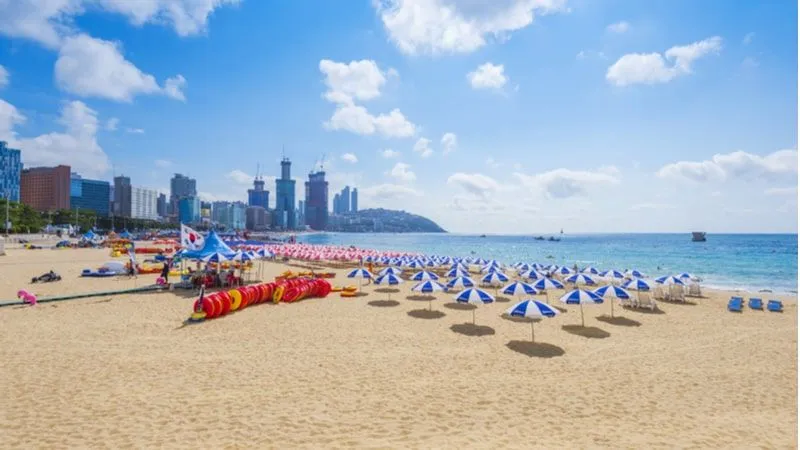
South Korea is a destination not only for the people looking for tranquility, it is a perfect location for those seeking a beach-y vacation. Being a stunning peninsula, the country is covered by water on three sides reflecting the mesmerizing coastline for perfect surfing and soaking. With everything that is offered here be ready to take a little escape form the daily hustles, take some time out and explore few of the best beaches in the world that South Korea has.
1. Hajodae Beach
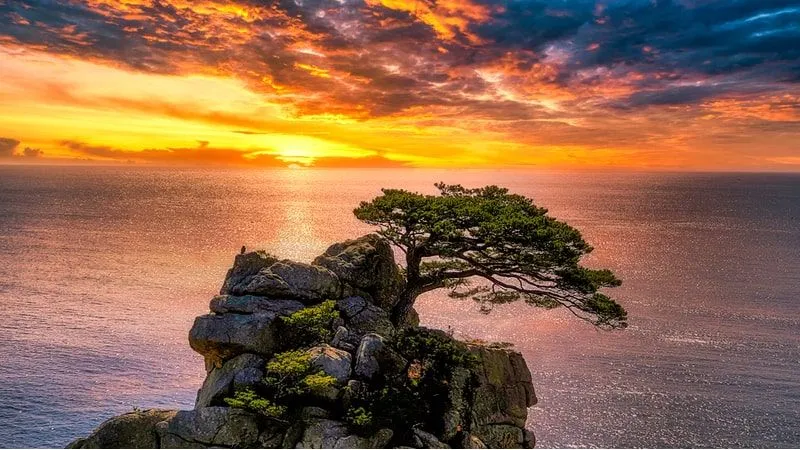
Popularly known as the ‘surfy beach’ the Hajodae stretches to 2 miles and embraces surfers form the far-off places. Being one of the most famous beaches in South Korea for adventures and striking beauty. If you are an explorer, walk through the coastline from the point of entrance to discover the pine forest behind the beach and experience the tranquility it offers. Beside the hypnotizing beauty of the beach visitors can check out the white light house located in the left side of the beach. The beach segregates the crowd in to section the surfers and the swimmers and offers different zones to them, offering an unhindered fun to all the visitors. Not to deny Surfing is always the priority, so if you love surfing this beach is a must visit for you.
How To Reach: The beach is easily connected via direct buses that interconnect Gangneung and Hajodae. A taxi from Yangyang Intercity Bus Terminal can be taken to reach Hajodae. The drive will take around 10 minutes.
Attractions: Gyeongpo Beach, Naksansa Temple and Seoraksan National Park
Things To Do: Surf on the beach, explore the lighthouse and swim at the beach
Suggested Read: Solo Female Travel Tips For Women Globe-Trotters
2. Seobin
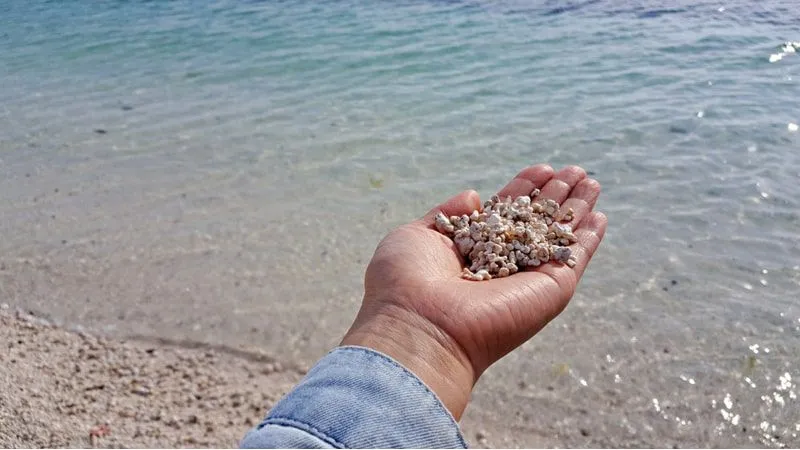
Renowned as the Peanut Island in South Korea, that lies in proximity to the Jeju island, homes another mesmerizing beach destinations called Seobin. Visitors hop in to relax in the bright white sand and blissful ambience, the moment you step at the shore most appreciable thing that would catch your gaze is the turquoise water. Being the only coral beach in South Korea, coral remains a major attraction for tourists. Seobin must be visited at least once if you are in an excursion to the country.
How To Reach: Direct flight from Jeju International Airport, from there visitors can take a taxi to Seongsan-ri port and next take a ferry to Udo island of Udo.
Attractions: Udo, Aquaplanet Jeju, Haenyeo Museum and Seongsan Ilchulbong,
Things To Do: Songdo Cable Car and Songdo Skywalk
Suggested Read: Qatar Top Country In The Middle East As Per The HSBC Expats Explorer Survey 2020
3. Haeundae
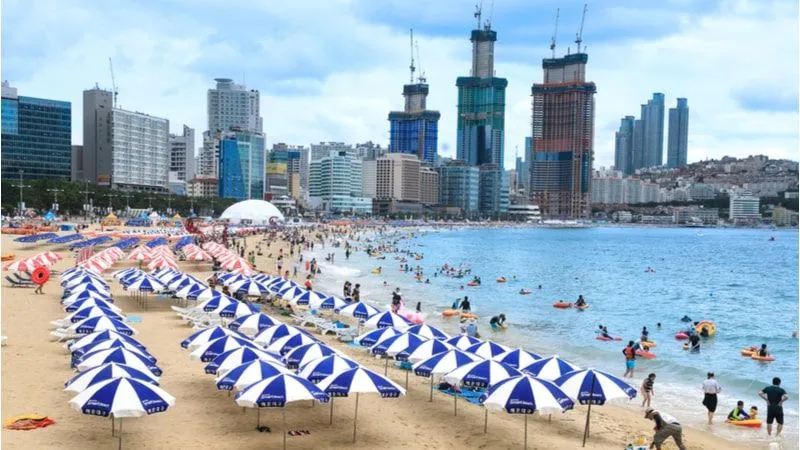
Ever heard about the Busan International Film of South Korea? It is an event that is awaited throughout the year. Although it is one of the major tourist attractions in South Korea that the beach offers in October along with many events conducted right in the glistening sand. The event is one the main reason what makes the destinations worth visiting in the month of October. Haeundae beach is one of the most famous places to visit in south Korea that are worth every moment of life. There are various beach parties happening around, so if you do not have any plan of yours, you can join the party and enjoy the new year's or any other event that has called for the party.
How To Reach: Haeundae Beach stop is the nearest stop and the beach has a decent connectivity to Busan Subway Line 2
Attractions: Sealife Busan Aquarium, Buddhist temple, Radium Art Center, APEC Naru Park and Haeundae Cinema Street
Things to do: Attend Busan Internationa Film, relax in the white sand, Enjoy the beach parties.
Suggested Read: Islands in Lakshadweep: Navigating Bliss in the Ocean's Embrace
4. Eurwangni
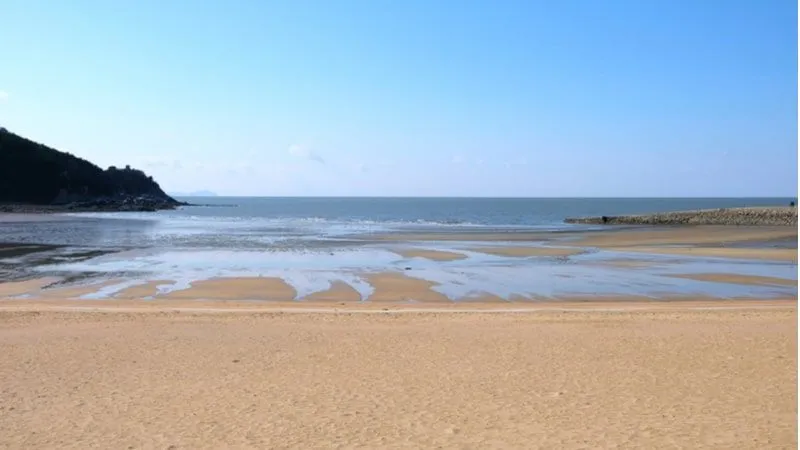
An eye catchy curve brimming with water, the Eurwangni is a fascinating beach perfect for a getaway with family and friends. It is one of the busiest beaches in South Korea that has crown throughout the year. There are various accommodations where visitors can enjoy luxurious. The beach with shimmery white sand and deep blue water can be easily accessible from the Incheon Airport.
How To Reach: From Seoul, Eurwangni Beach can be reached via the Incheon airport.
Attractions: Incheon Airport Maglev, Muuido Island, and Masian Beach
Things to do: relax and unwind with your family and friends
Suggested Read: Turkey UNESCO World Heritage Sites: Ancient Wonders and Historic Treasures
5. Naksan Beach
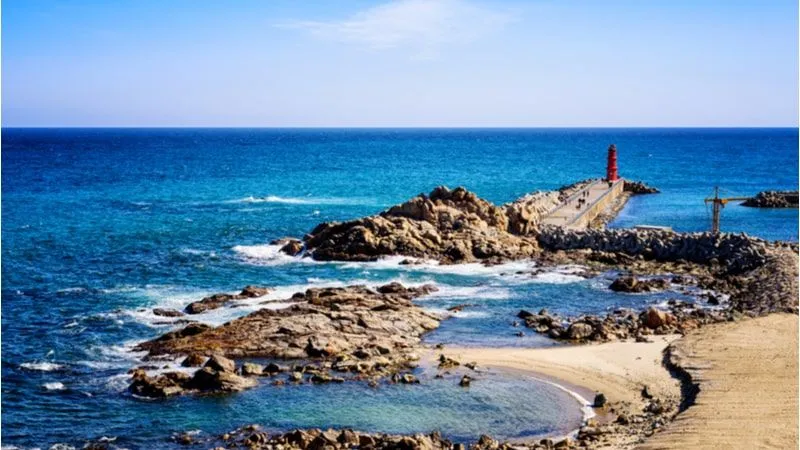
Located on Gangwon-do Province’s northeast coast in South Korea, Naksan Beach bestows gigantic Seoraksan Mountains. The beach is a perfect destination for vacation. Visitors enjoy the awesome views of the sunrise from Uisangdae Pavilion and Naksansa Temple. Having a coastline across 4km, the beach lines by broad walkways, trees and surreal natural beauty. If you are looking for wedding destination around the world, this beach can serve as the perfect location for a beach wedding.
How To Reach: A driect bus from Dong Seoul Bus Terminal to Naksan can be taken, then from Naksan Intercity Bus Terminal turn right and head straight to Naksan Beach.
Attractions: Naksansa Temple, Sangdae Pavilion and Daepo Port
Things to do: Relax at the sea shore, enjoy the scenic beauty
Suggested Read: Saffron Lounge Doha, Qatar: A Perfect Amalgamation Of Traditional Indian Cuisine With Modern Flavors
Hop In The Luxurious Hotels In South Korea For Utmost convenience
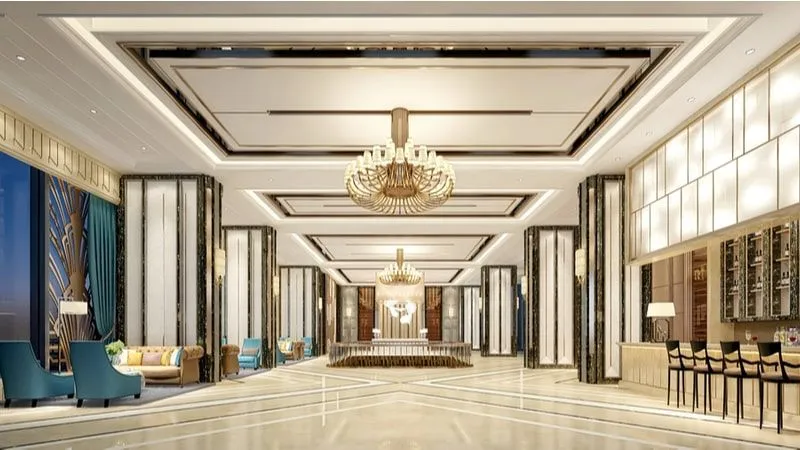
South Korea offers a salient blend of experiences varying form thrill to adventure and religious to technological. The country has enticing accoutrement to offer a soul satiating journey to excursionists looking for fun and adventure. It has many hidden gems that are yet to be explored given the vast cultural and traditional background, adding charm to this, here are 5 of best hotels in South Korea that can make your holidays convivial and call you back and gain to relish the luxury.
1. Novotel Ambassador Seoul Doksan
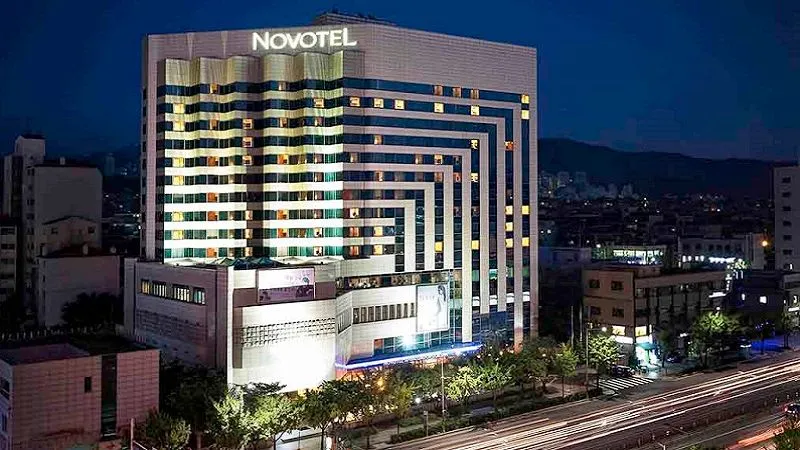
The commodious hotel nests in proximity to the Doksan station, featuring comfort amalgamated with the luxe amenities. Novotel Ambassador hotel in South Korea is amongst the most popular accommodations in the country. The hotel offers services such as swimming pool, a decent car parking space, air conditioning facilities, bars and meeting rooms. The total number of rooms in the hotel, is 218 and out of which 175 rooms are nonsmoking rooms, the needs of people with reduced mobility have not been neglected. The hotel has comfortable rooms and wheelchair facility for people in need. The staff is courteous that makes the stay more comfortable.
Location: 378, Siheungdae-ro, Seoul, South Korea
2. Grand InterContinental Seoul Parnas
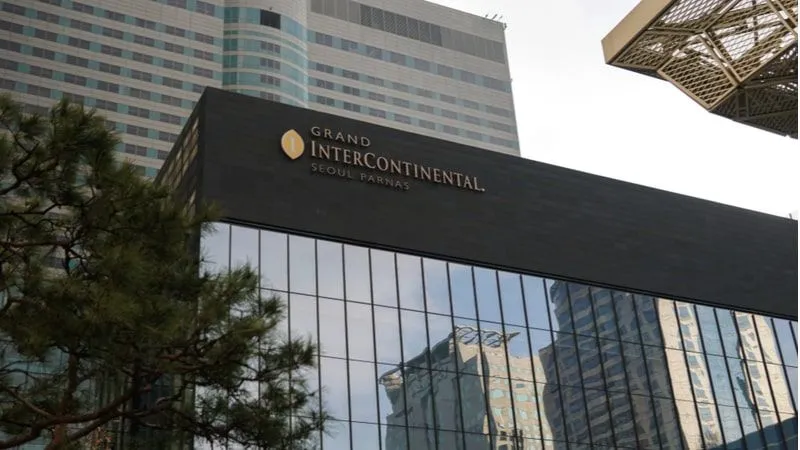
Redefining Luxury at every step, The Grand InterContinental is an epitome of grand 5-star hotels in Souths Korea located in the heart of Gangnam. The hotel commits to offer an enriching experience to all their guest, be it business travelers or people travelling in leisure. Check out the Korean elegance and modernity in the Club continental and Lobby & lounge area which is perfect for corporate meetings and private functions. The car parking space can accommodate approximately 1075 vehicles along with valet parking services. The hotel is a perfect choice for those who are in quest of luxurious and comfortable stay.
Location: 521 Teheran-ro, Gangnam-gu, Seoul, South Korea
3. Ramada Hotel and Suites
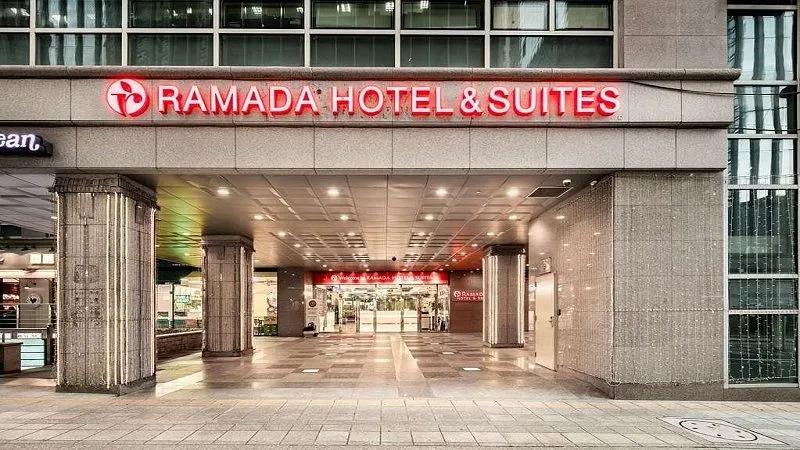
Nestling in the center of the city, Ramada hotels and suites in south Korea is very conveniently accessible from airport. Offering a full service stays Ramada Hotels commits to serve everyday travelers. So, if you are travelling to South Korea, for sightseeing or for a business trip the luxe services and comforting amenities can make you feel like home with a touch of royalty. Marking its place at hundreds of locations, Ramada hotels have been delivering top notch services such as fantastic rooms, well-organized staff, great combination of food and stay.
Location: 27 Chilpae-ro, Sunhwa-dong, Jung-gu, Seoul, South Korea
4. Mercure Seoul Ambassador Gangnam Sodowe
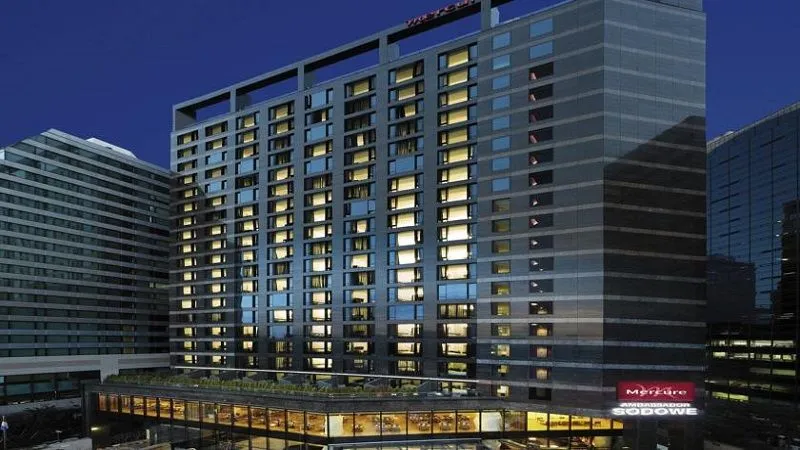
Have already planned a trip to South Korea and surfing in quest for a Luxury accommodation in South Korea? Well, the search might end here. One of the most exquisite hotels in South Korea, Mercure Seoul Ambassador is a perfect blend of luxury and home. Home here means comfort and leisure that many itinerant look for. The hotels offer a spectacular view of the skyline, and has a fitness center and 3 dining options serving relishing delicacies. The rooms and additional facilities are second to none and the stay is super comfortable. Once you are here you don't leave the premises disappointed.
Location: 10 Teheran-ro 25-gil, Yeoksam 1(il)-dong, Gangnam-gu, Seoul, South Korea
5. Somerset Palace Seoul
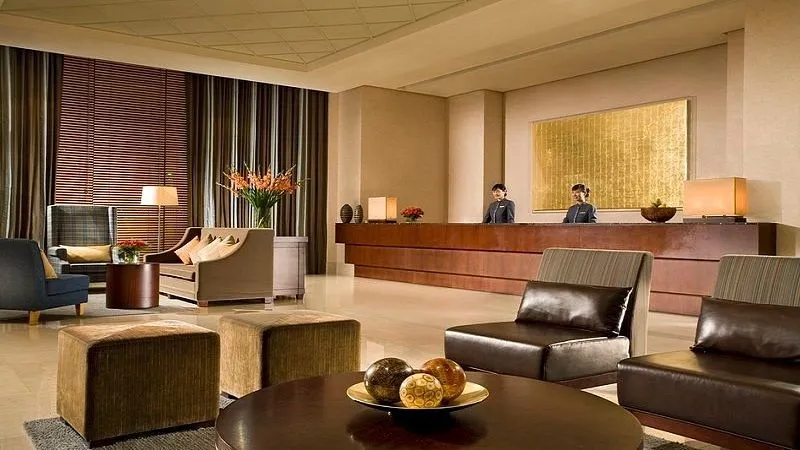
Planning to visit South Korea? Don’t miss out on this lavish hotel in South Korea offering exceptional luxury. The Somerset Palace in Seoul is a most recommended accommodation in the country, given the luxurious facilities is offers. There are various attractions that can be checked out by the tourist and they can also relish the authentic delicacies served in. You would love the hotel for it well maintained rooms, work out area, meeting spaces and food outlets serving authentic lip smacking delicacies.
Location: 7 Yulgok-ro 2-gil Jongno-gu Jongno-gu Seoul KR, South Korea
If you are visiting South Korea, Entertainment is one thing that you can never fall short of. From K pop band to compleat Seoul nights, the country offers everything. Whether you are in quest of serenity or wildness just direct your plans here and penetrate into soul satiating experience and it is a bet that you would never leave disappointed. The country offers a perfect fusion of traditions which is reflected in the juxtaposing featured from old Buddhist temples, sub-tropical islands, nightlife. If you are in the vacay mode just book your flight and explore these best tourist Attractions in South Korea listen in the blog. Book your South Korea tour packages with us for an ultimate vacation amid natural riches.
FAQs
Officially known as the ‘Republic of Korea’, and its rich tapestry of history and heritage reveals the cultural opulence engirdling the all-inclusive facets from art and architecture to the ancient monuments, gastronomy and innovative technological advancement. It is the southern half of the Korean Peninsula bounded by the Sea of Japan in the east, the Yellow Sea in the west and the Korea Strait in the south.
There are many captivating places to visit in South Korea, few of them are Bulguksa Temple, Hwaseong Fortress, Bukchon Hanok Village and Jongmyo Shrine.
International airports of South Korea are located at 7 distinct places. International airport in the capital city Seoul is the busiest airport, Visitors can take a flight and can take public conveyance to reach the desires place. Being the capital city Seoul is thoroughly interconnected with different cities.
Korean festivals are full of life, colors and joy and they are celebrated throughout the year. Jeju Fire Festival is globally renowned as it is an event certified by the Ministry of Culture, Sports, and Tourism. It is celebrated to burn off the old and wilted grass for cattle and to kill vermin that might have developed in the soil for making it fertile for the next crop.
In the food culture of South Korea, rice is staple which is complemented by meat, fish and vegetable. Korean food is subtly influenced by Japan, Mongolia and China that have added to the flavor of original cuisine.
Hwaseong Fortress is an epitome of military architecture in Asia. It is included among the UNESCO World Heritage for its impressive defensive features with very intellectual design and appropriately designated places for the attacking and defending. It is located Provincial capital of Gyeonggi-do, in South Korea.
South Korea is vastly developed part of the country since commercialization has taken over, it is brimming with industries and tourism. on the contrary North Korea is uninhabited with minimal economic development.
South Korean or Korean food is popular not just with the national boundaries but also internationally. There are many dishes worth trying but here is the list of few best delicacies.
- Kimchi
- Samgyeopsal
- Daeji Bulgogi
- Gogigui
- Haejangguk
- Gimbap
- Chuncheon Dakgalbi
The best time to visit South Korea is during the spring months ranging from April to June when the weather remains pleasant and comfortable for touristic activities. You should plan your South Korea trip in March or April to witness the cherry blossoms.
You will need a minimum of 7 to 8 days to cover the major highlights of South Korea including the various natural splendors and cultural landmarks. You can even extend your stay in South Korea based on your preferences.
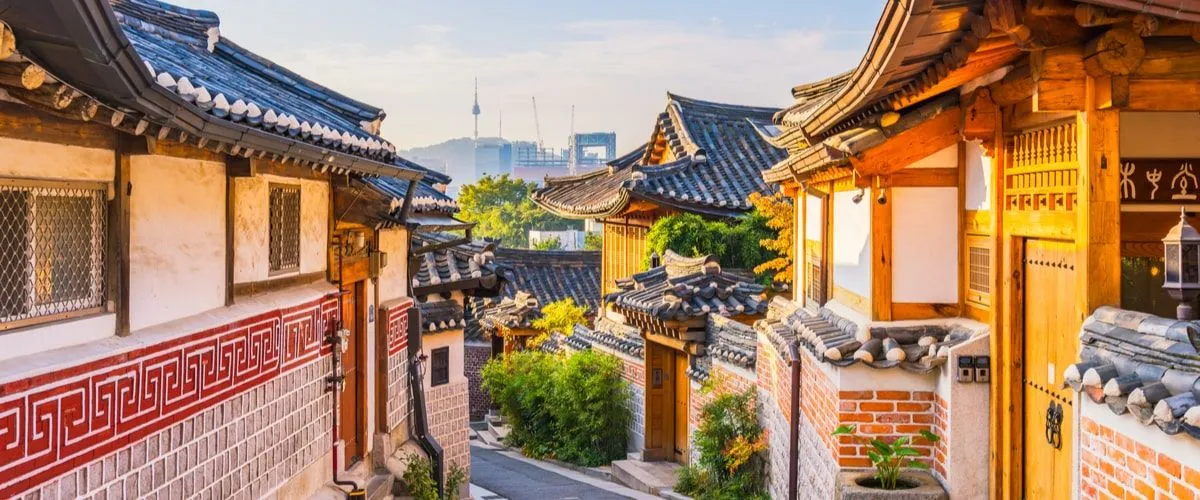
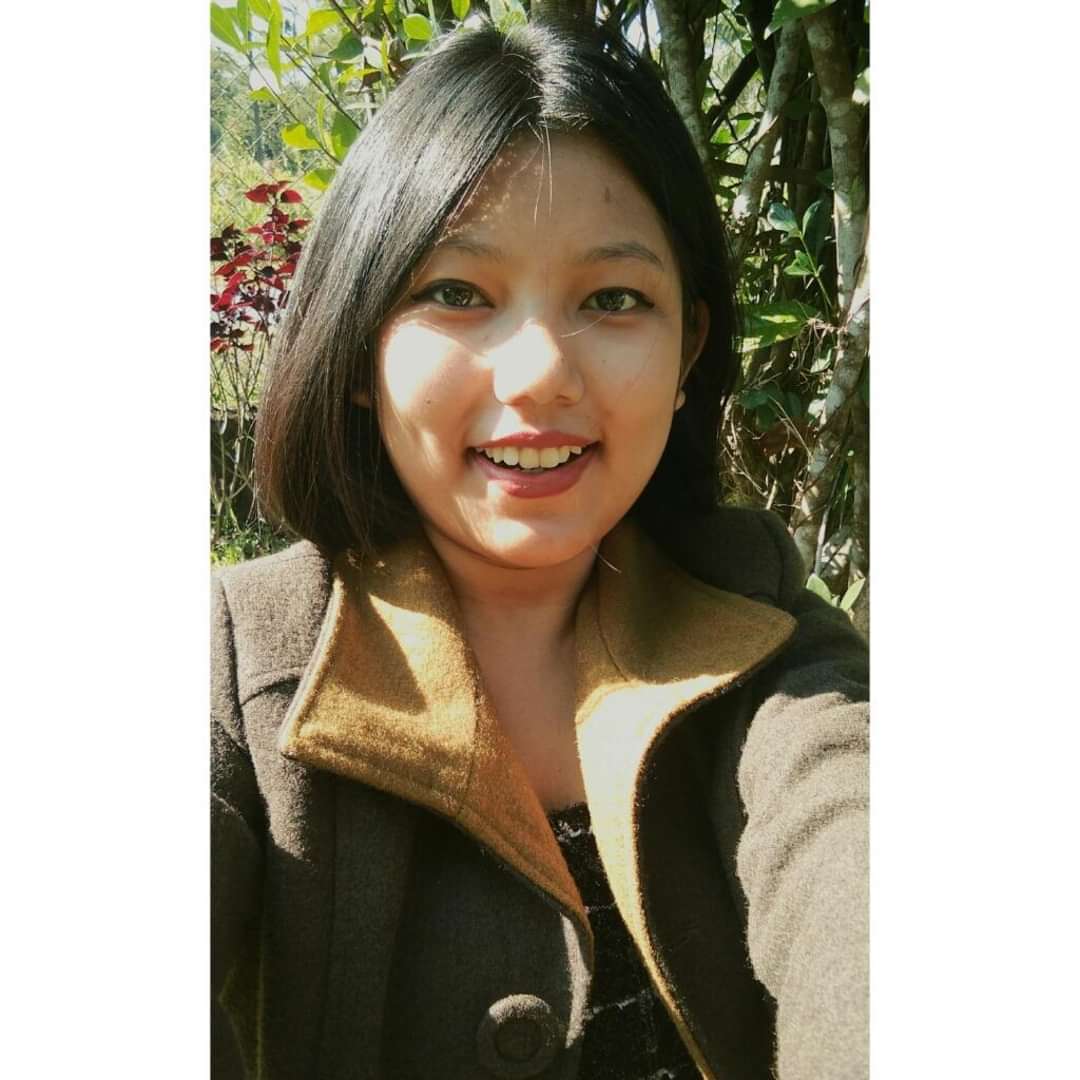

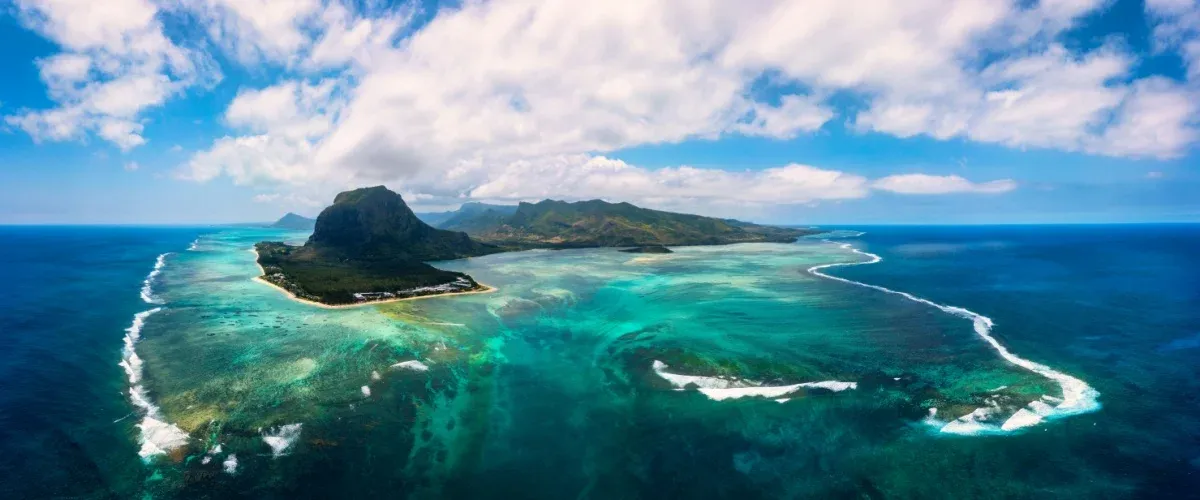
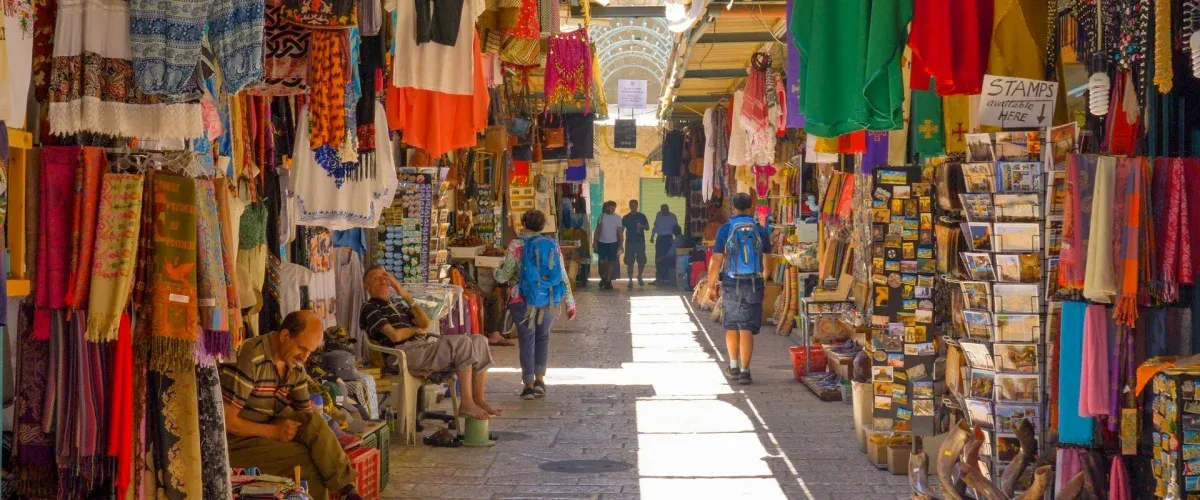
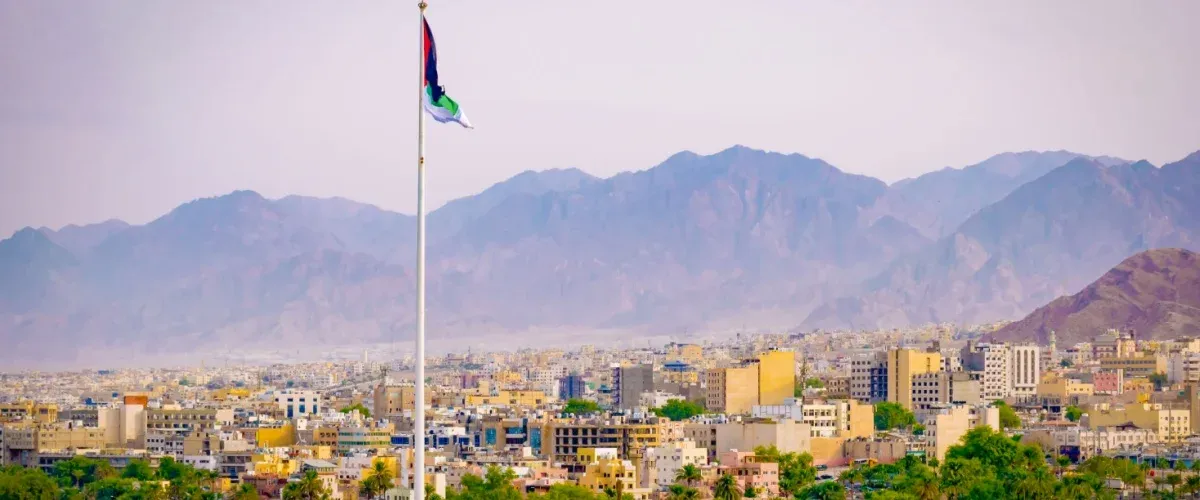
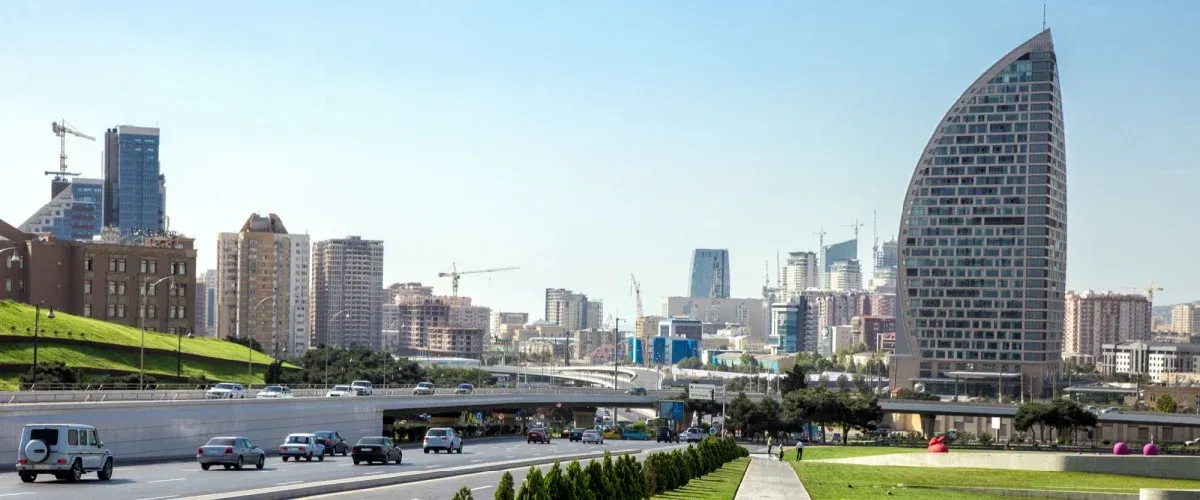
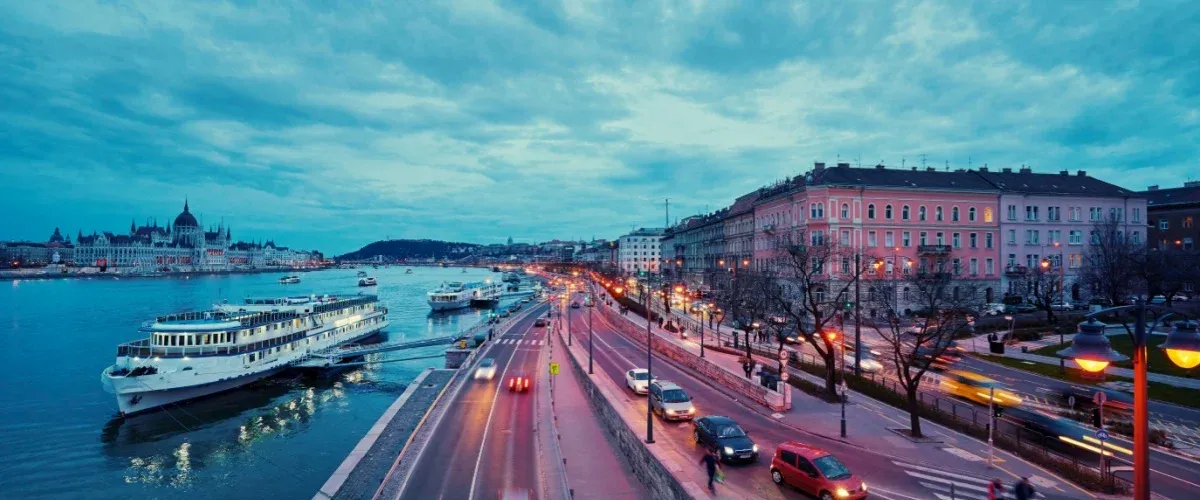
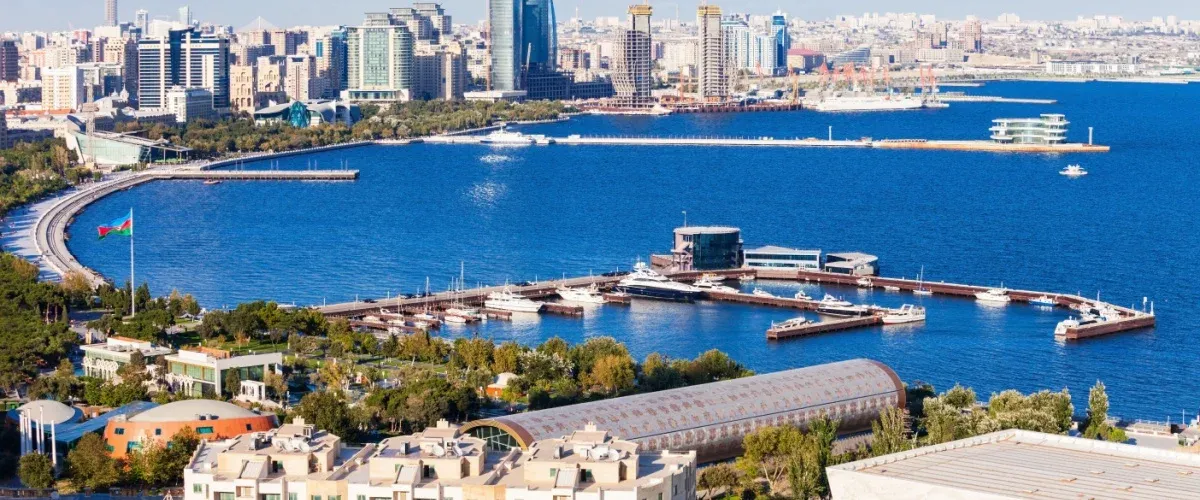

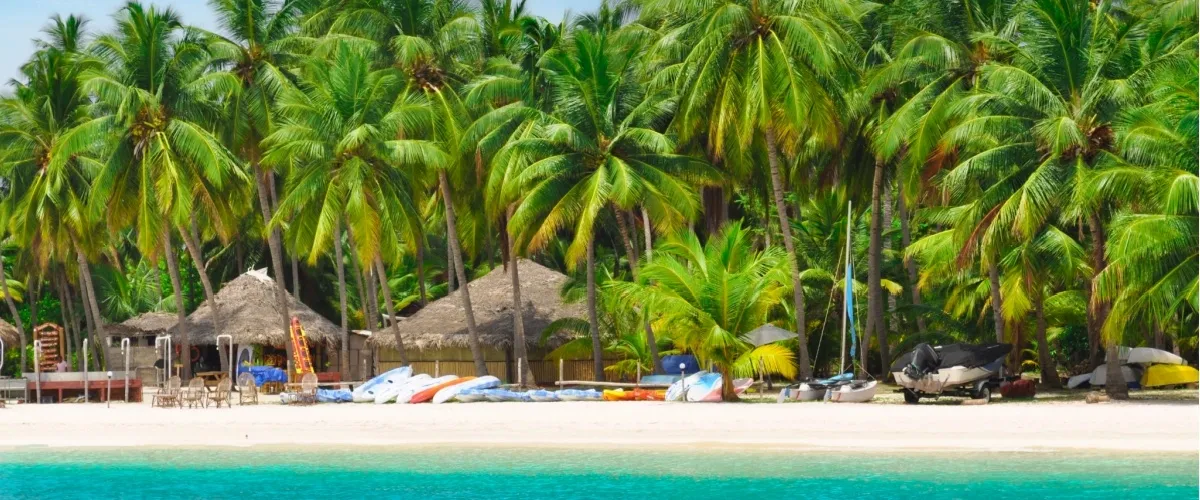
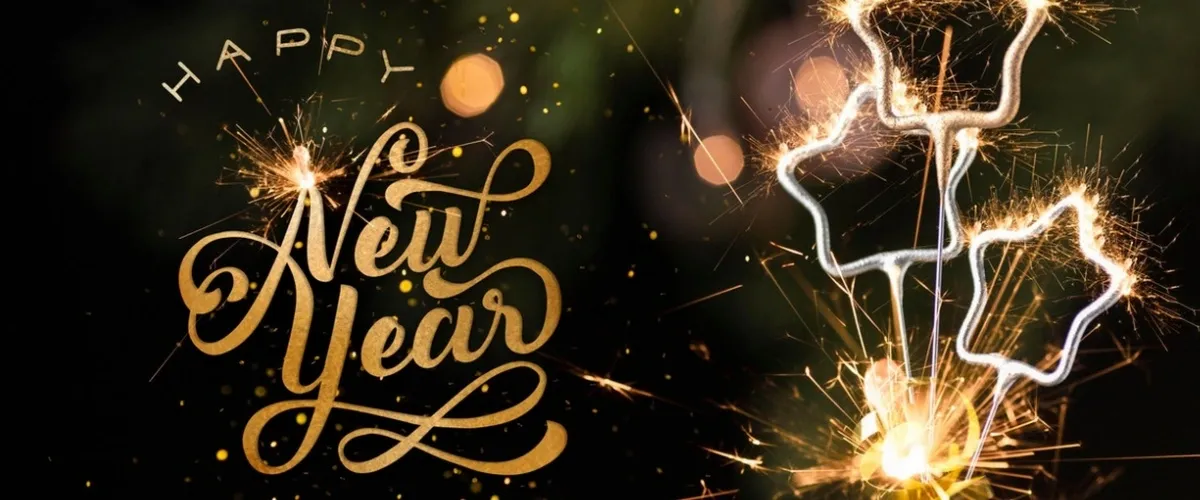
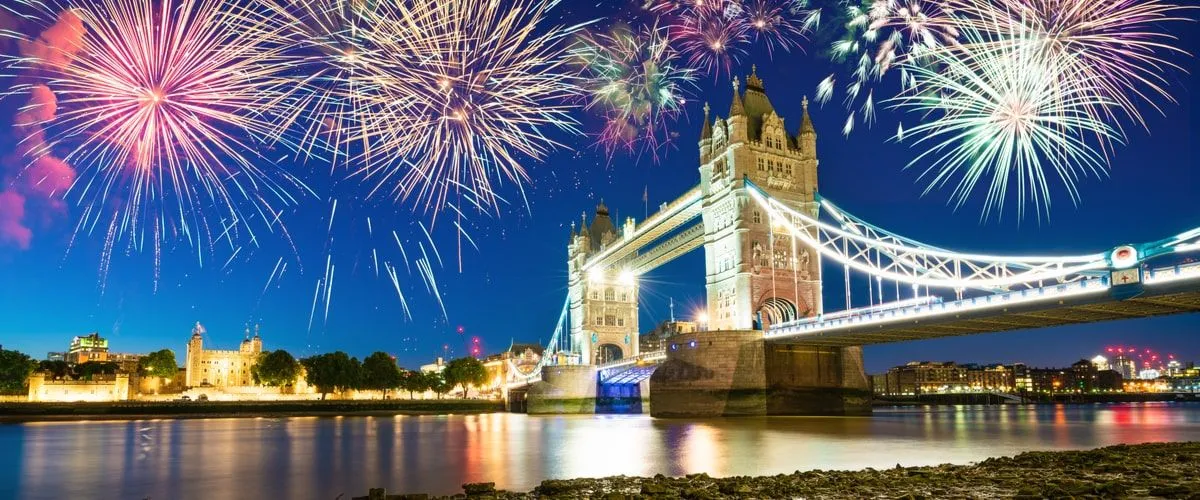


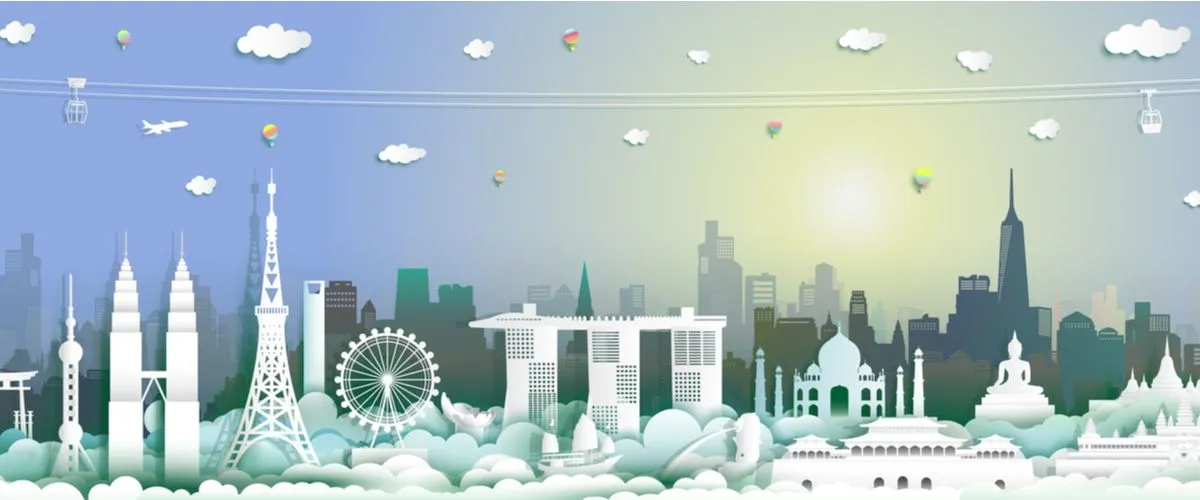
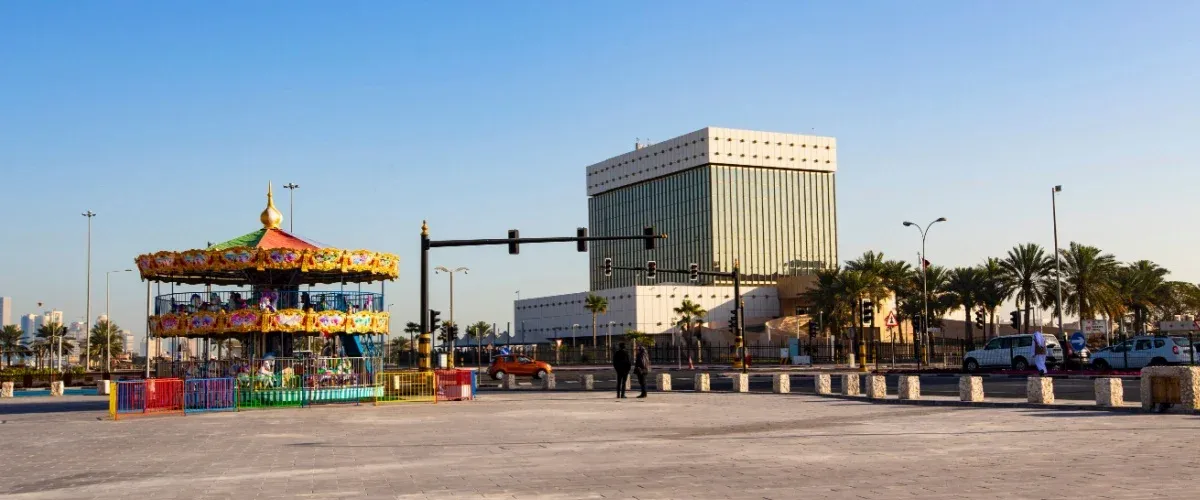
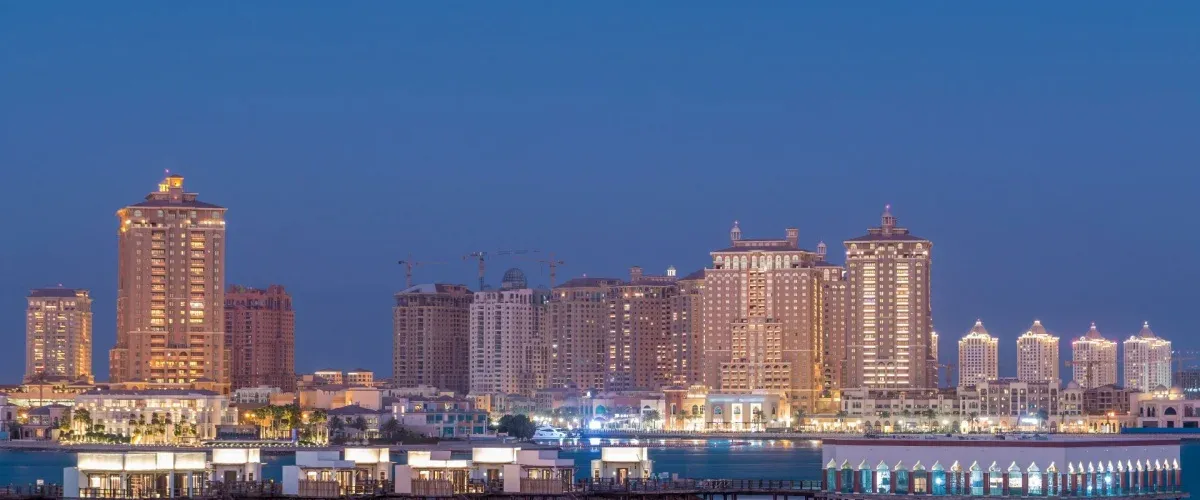

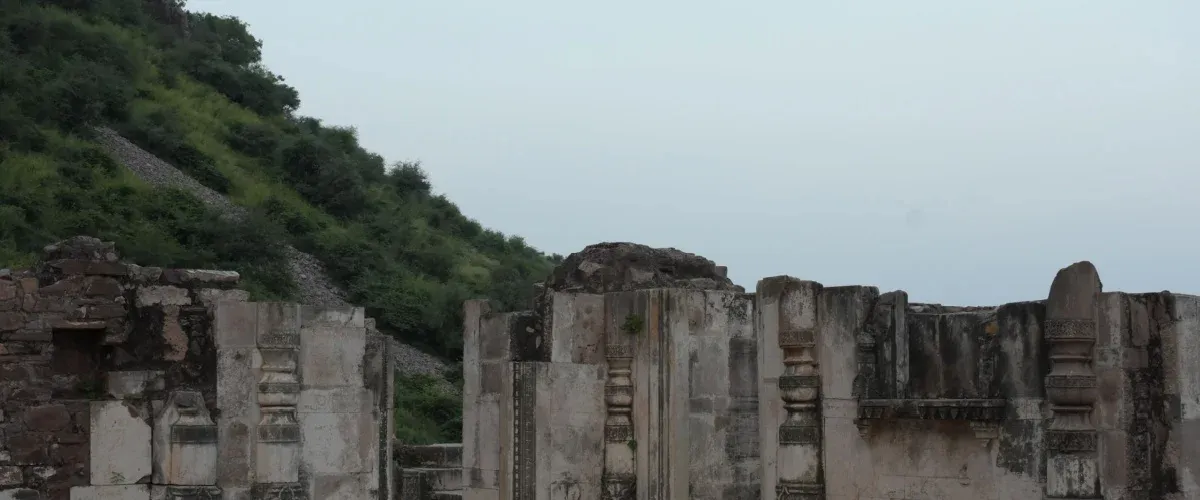
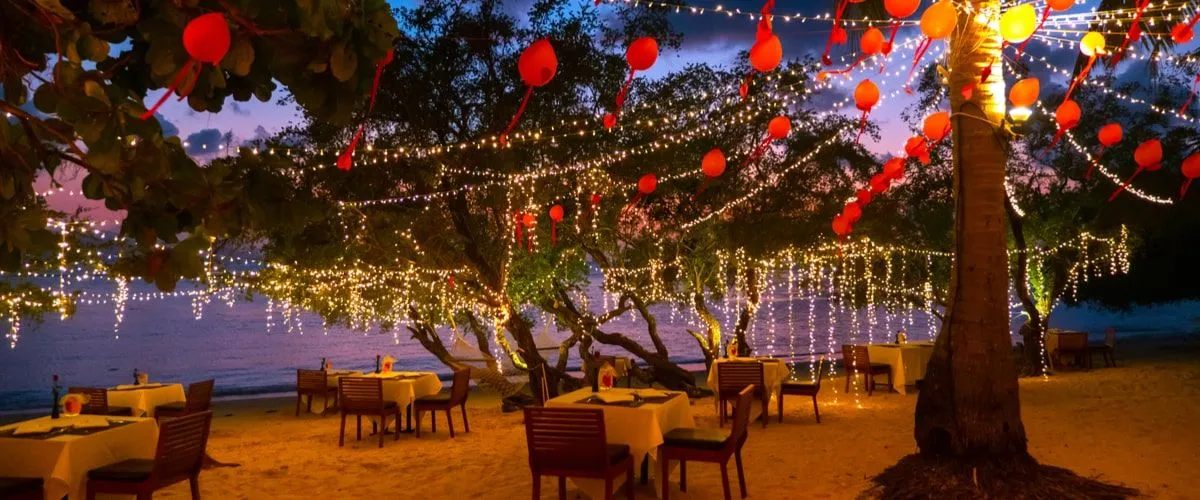
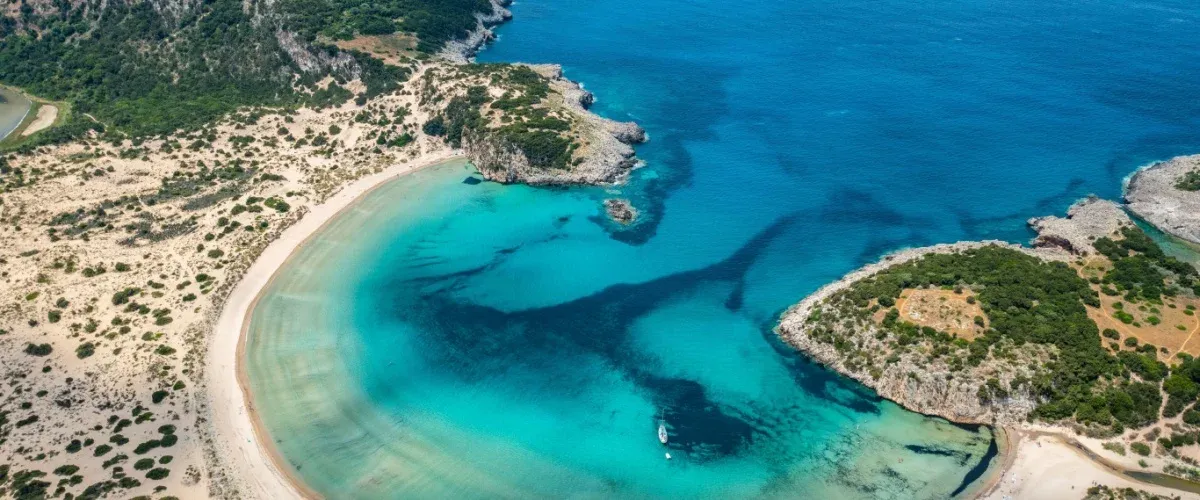
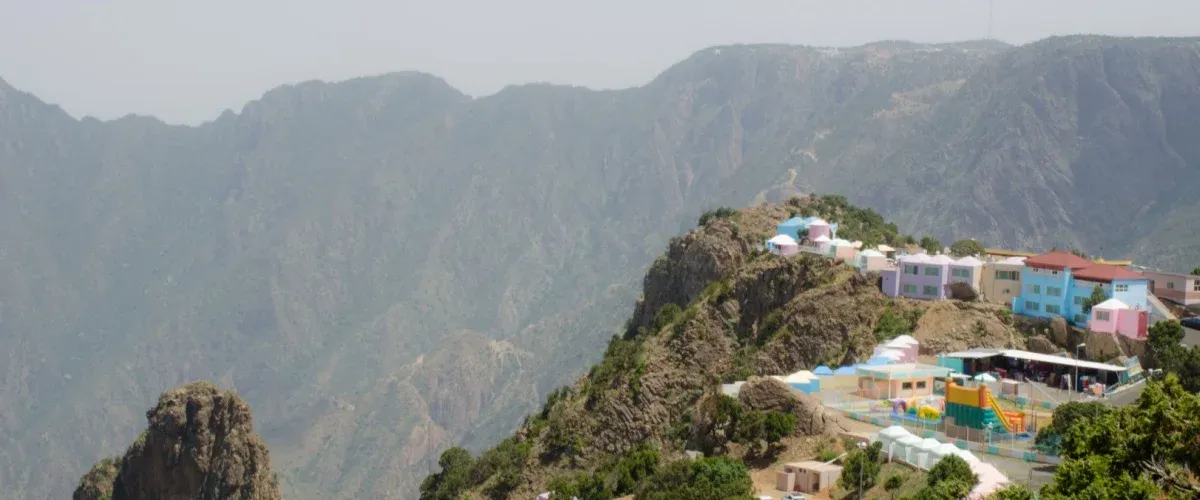
.webp)